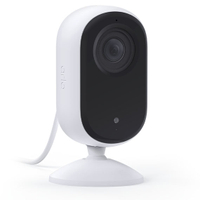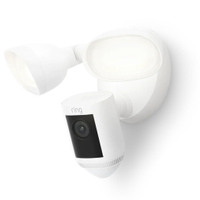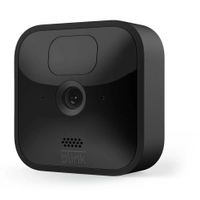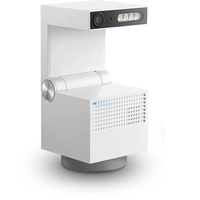The best home security cameras 2025: tested for peace of mind
We've tested stacks of security cameras in real-world conditions to bring you this guide to the very best
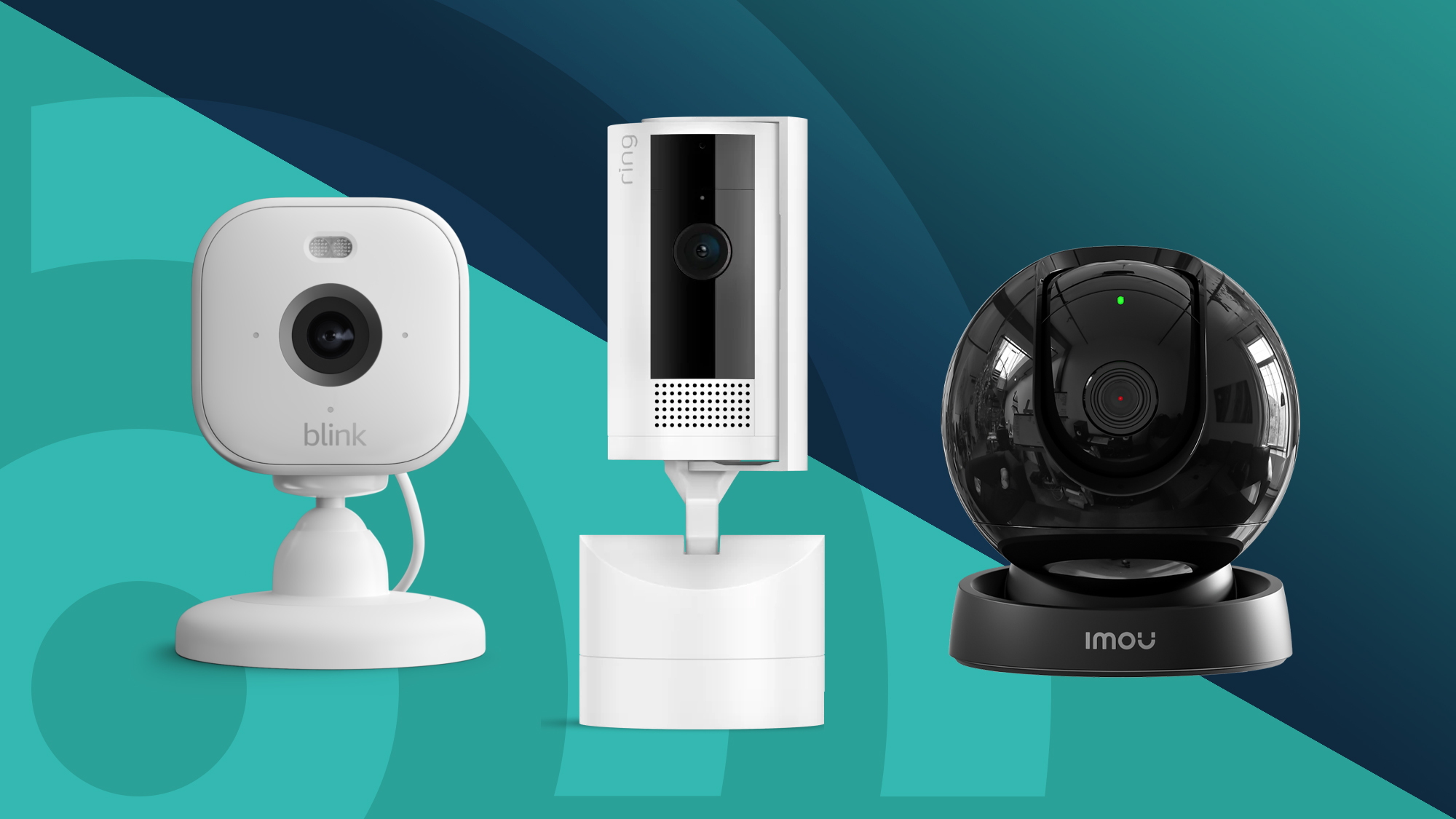
With one of the best home security cameras installed, you can rest easy knowing that your property and family are secure. Whether you live in a rented apartment or a spacious house, there are indoor and outdoor cameras to keep it covered.
We test scores of home security cameras here at TechRadar, from big brands like Ring and Arlo, through to smaller companies that are just starting out and have some innovative ideas. We install each camera in our own homes and put it through its paces in real world conditions, capturing footage in different lighting conditions, using the mobile app to assess the quality of footage, and checking how well it connects to the rest of our smart home devices.
We'll also let you know about any potential drawbacks, such as whether the camera requires a subscription to unlock certain features, or to store footage in the cloud.
For example, if you have a Ring security camera, you'll need a Ring Home subscription (starting at $4.99 / £4.99 / AU$4.95 per month) for features like online storage and access to 180 days of event history. If you have a Google Nest camera, you'll need to pay $8 / £6 / AU$12 per month for Nest Aware membership to check historic events. In both cases, 24/7 recording requires a premium subscription plan.
The quick list
Below is our quick guide to the best home security cameras around. Use it to narrow down your options, then either hop down to the more in-depth entry, or head straight to a retailer to buy.
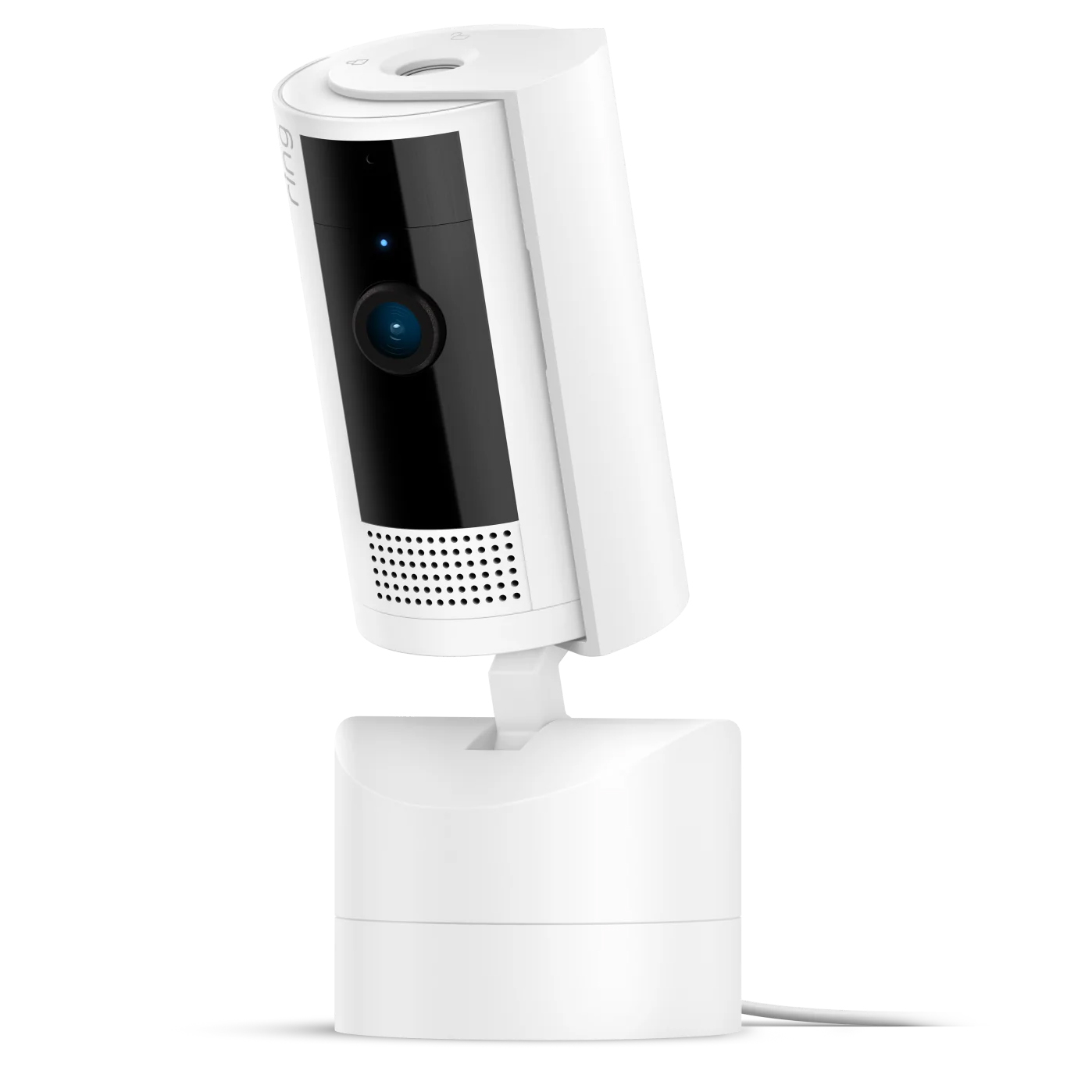
Best home security camera overall
This smart little security camera offers a fantastic field of view thanks to its 360-degree rotation and 169-degree tilt. You'll need a Ring Home subscription to make the most of its features, but its affordable price tag and ease of use make this our number one home security camera right now. Just bear in mind that it doesn't offer motion-tracking (even though it looks like it should). If that's what you need, take a look at the IMOU Rex 3D.
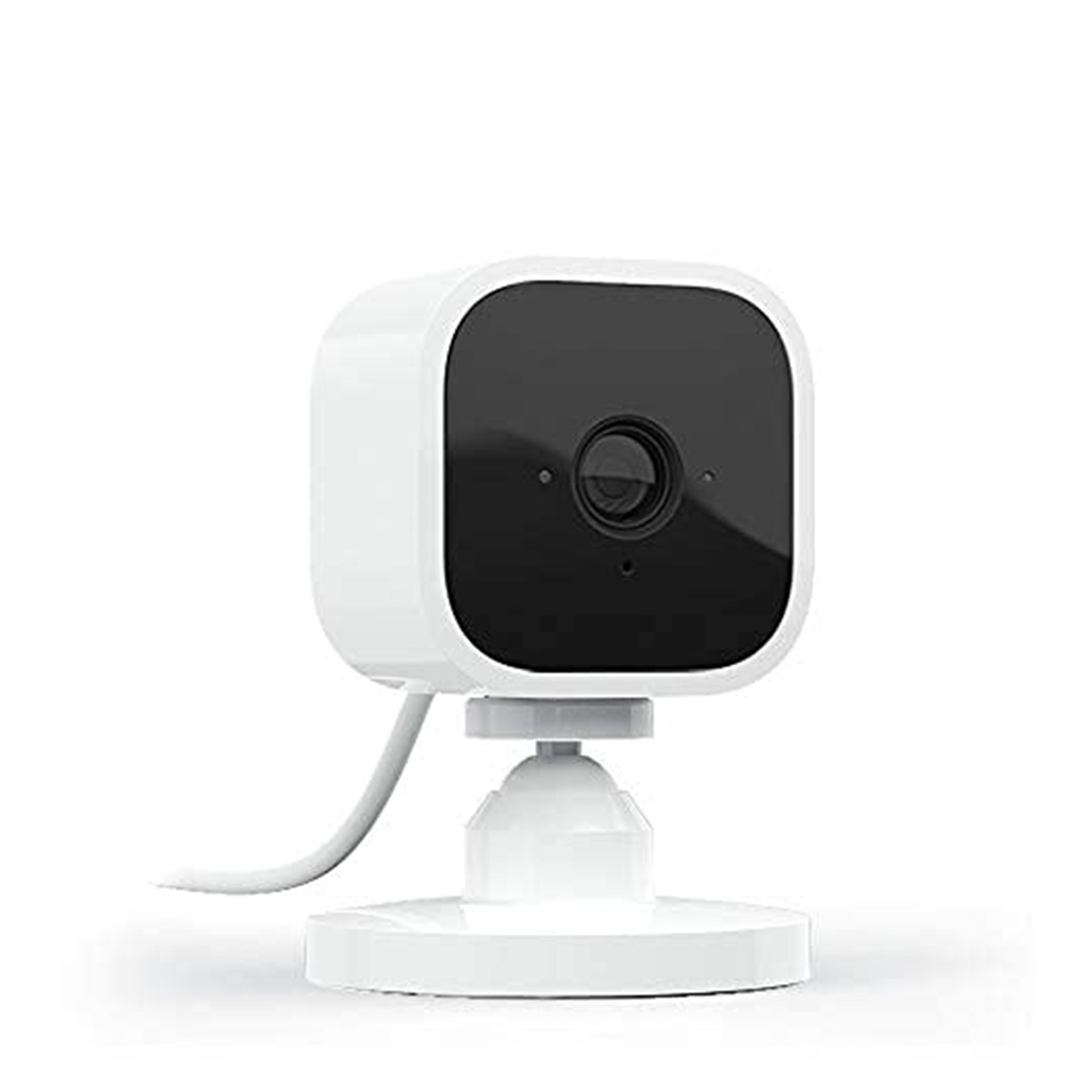
Best budget security camera
Security doesn't have to be expensive. During our tests, this affordable indoor camera impressed us with its crisp 1080p footage, and options for local and cloud storage. It has a compact design too, and can be mounted on a wall or used free-standing if you don't want to start drilling holes. We also like the fact that it can store footage locally if you have a Sync Module 2, though other features require a subscription, and it doesn't have the privacy cover you'd find on Ring's video doorbells.
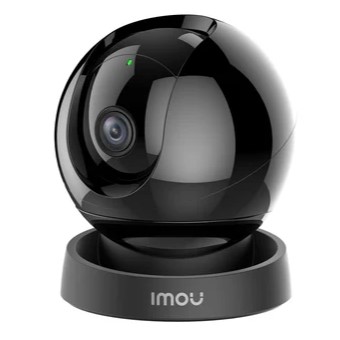
Best security camera with night vision
This compact, affordable indoor camera uses infrared to record footage in low light conditions, and you can set its motion sensor to only activate after dark, making it ideal for use for home security, or to help you watch over your child at night. We found it very easy to set up, too, though as with most home security cameras, you'll need to pay a subscription free to store footage in the cloud, and unlock some of the AI based features (such as pet identification).
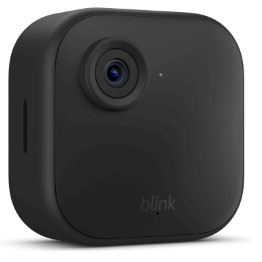
Best security camera for outside
Great home security doesn't have to be expensive, as this tough little outdoor camera proves. Compact, easy to install, and simple to use, the Blink Outdoor 4 is a great choice if you're looking for your first outdoor security camera. Some features are restricted to subscribers, but the essentials are free. We were particularly impressed by its two-year battery life, which means you can essentially set it and forget it, with no cables required. It's even better value when bought in a multi-pack.
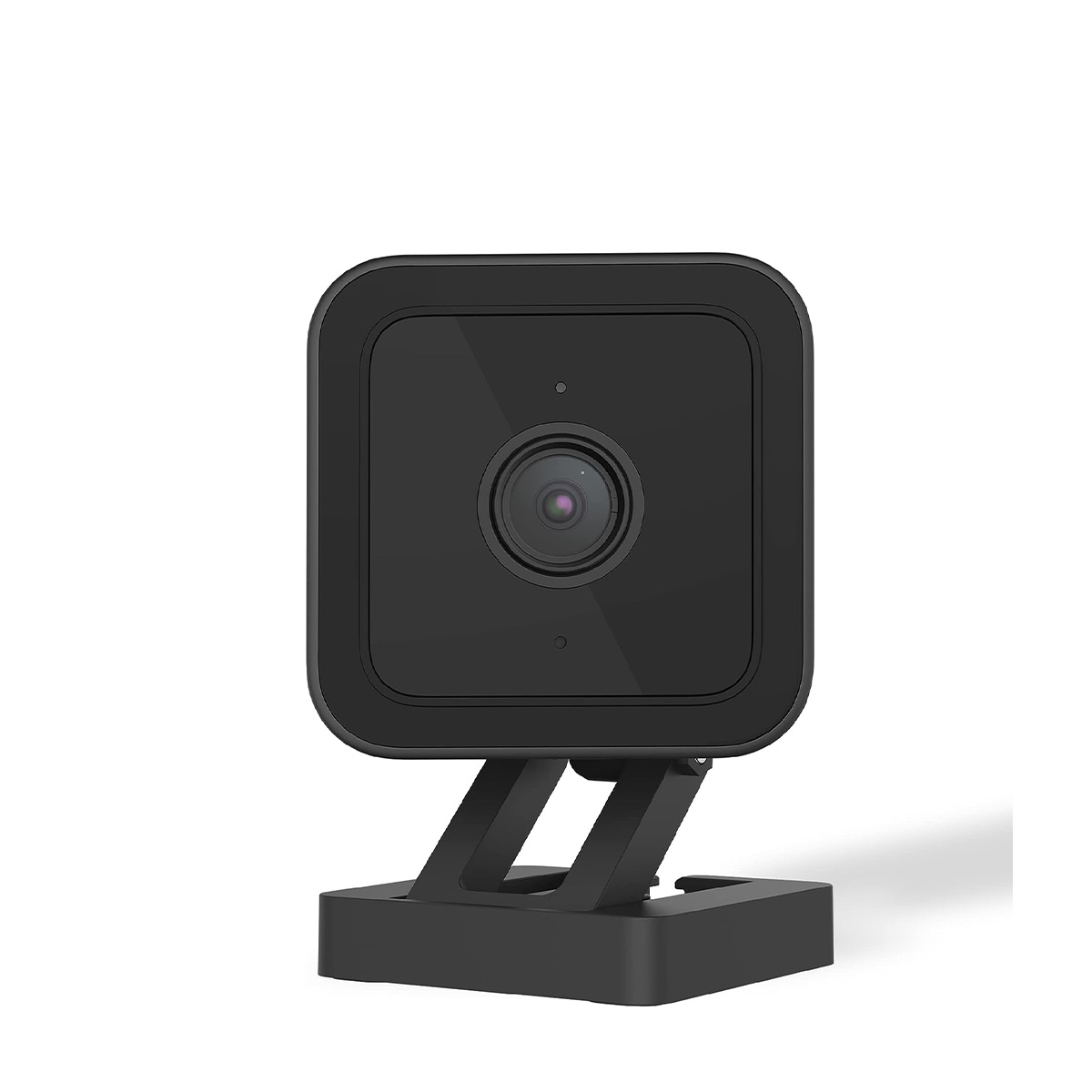
Best security camera with local storage
This affordable camera has a MicroSD card slot to store your footage, so there's no need to pay extra for a subscription unless you want AI features like person-detection. It's weather-resistant so you can use it indoors or out, though in our tests footage was clearest when recorded at close range, so we preferred using it inside. We found that its sound detection wasn't always reliable either, even in quiet environments, so if that's important to you then you may be better off with a camera from Ring or IMOU.
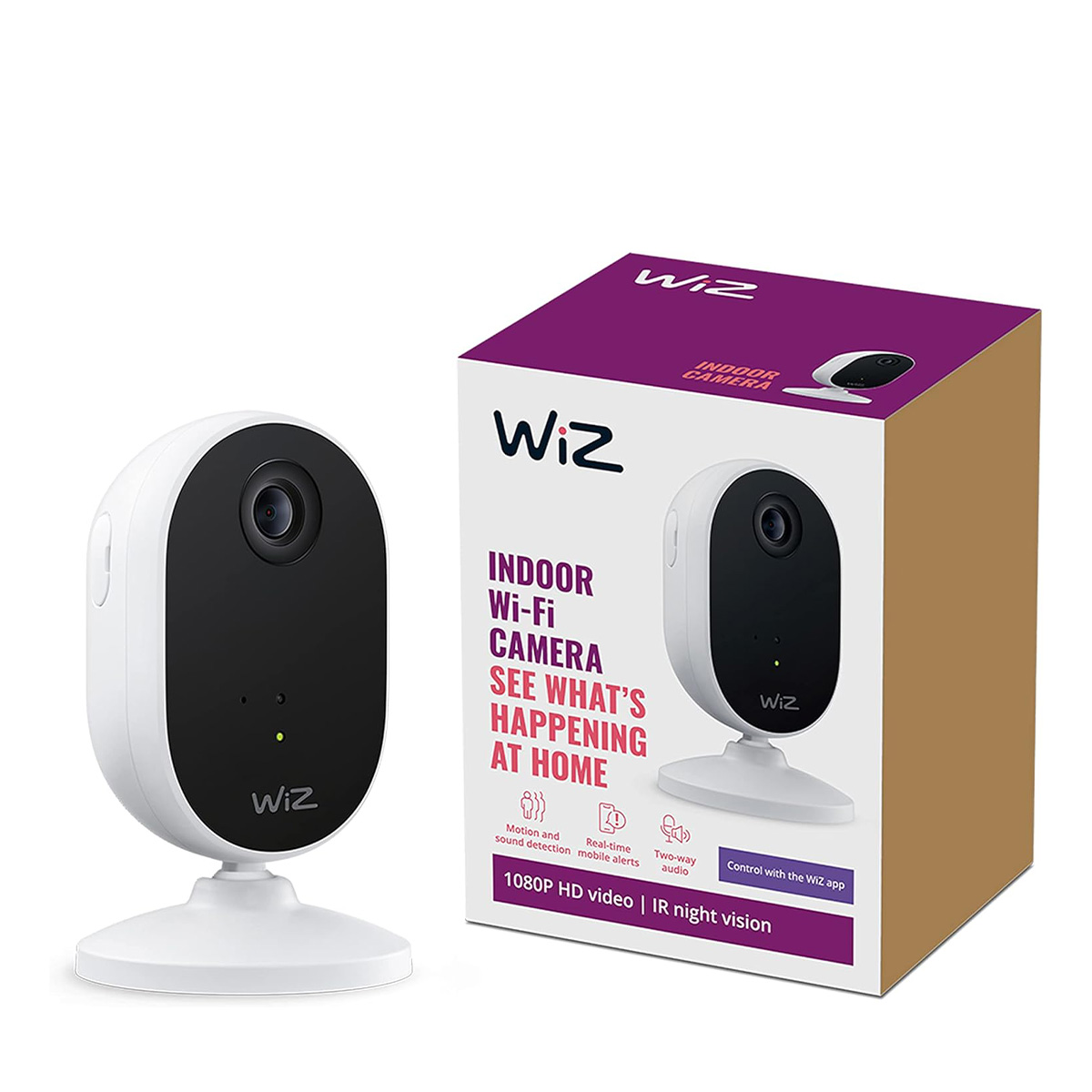
Best security camera for renters
The WiZ Indoor Camera doesn't require a monthly subscription, can be used freestanding so there's no need to drill into your walls, and lets you see a live feed from your phone. It doesn't have the premium feeling of more expensive cameras, and its field of view is relatively narrow compared to cams from some of the big brands like Ring, but if you want something for your rented apartment, it's ideal.
The best home security cameras 2025
Why you can trust TechRadar
The best home security camera overall
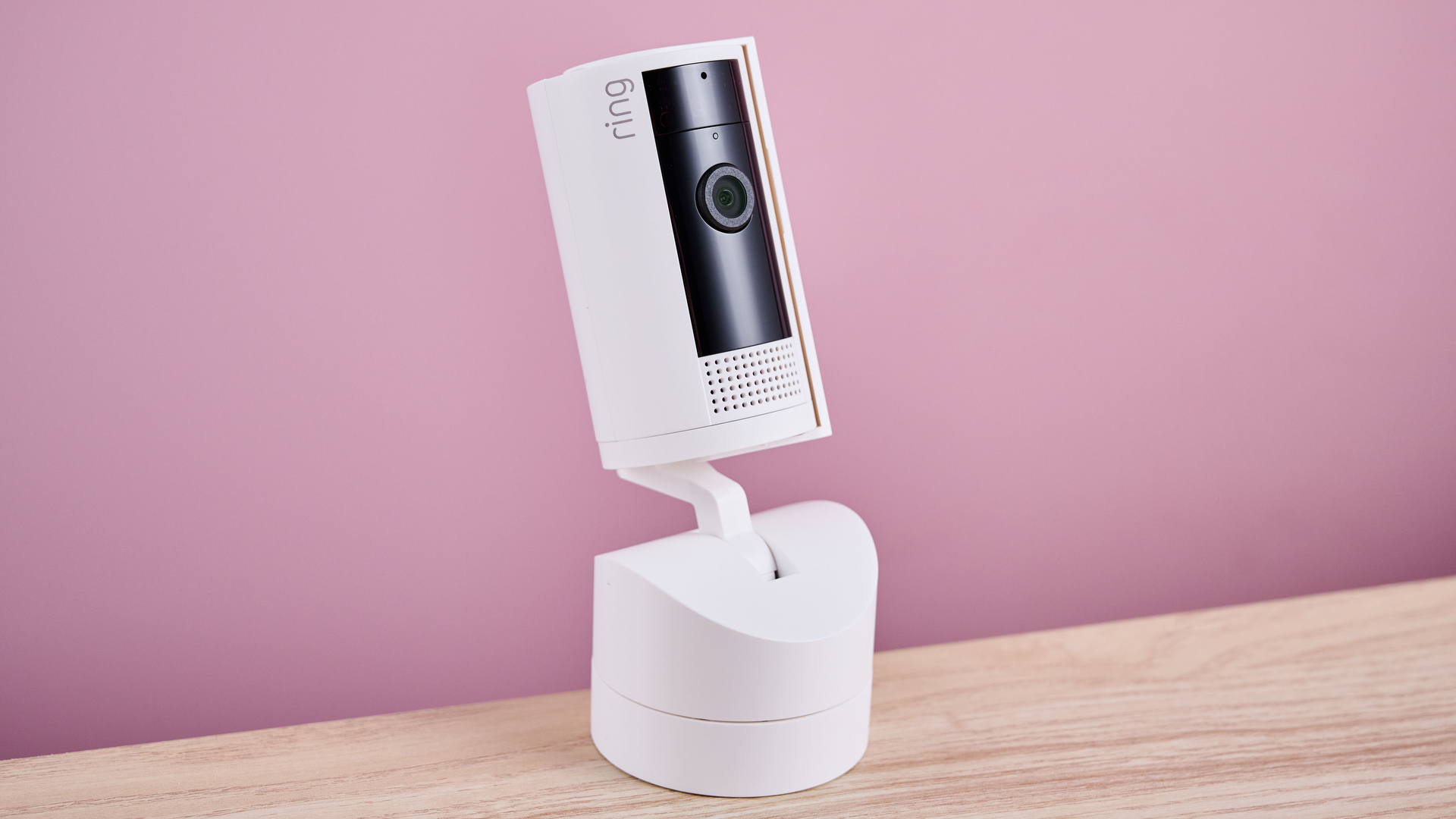
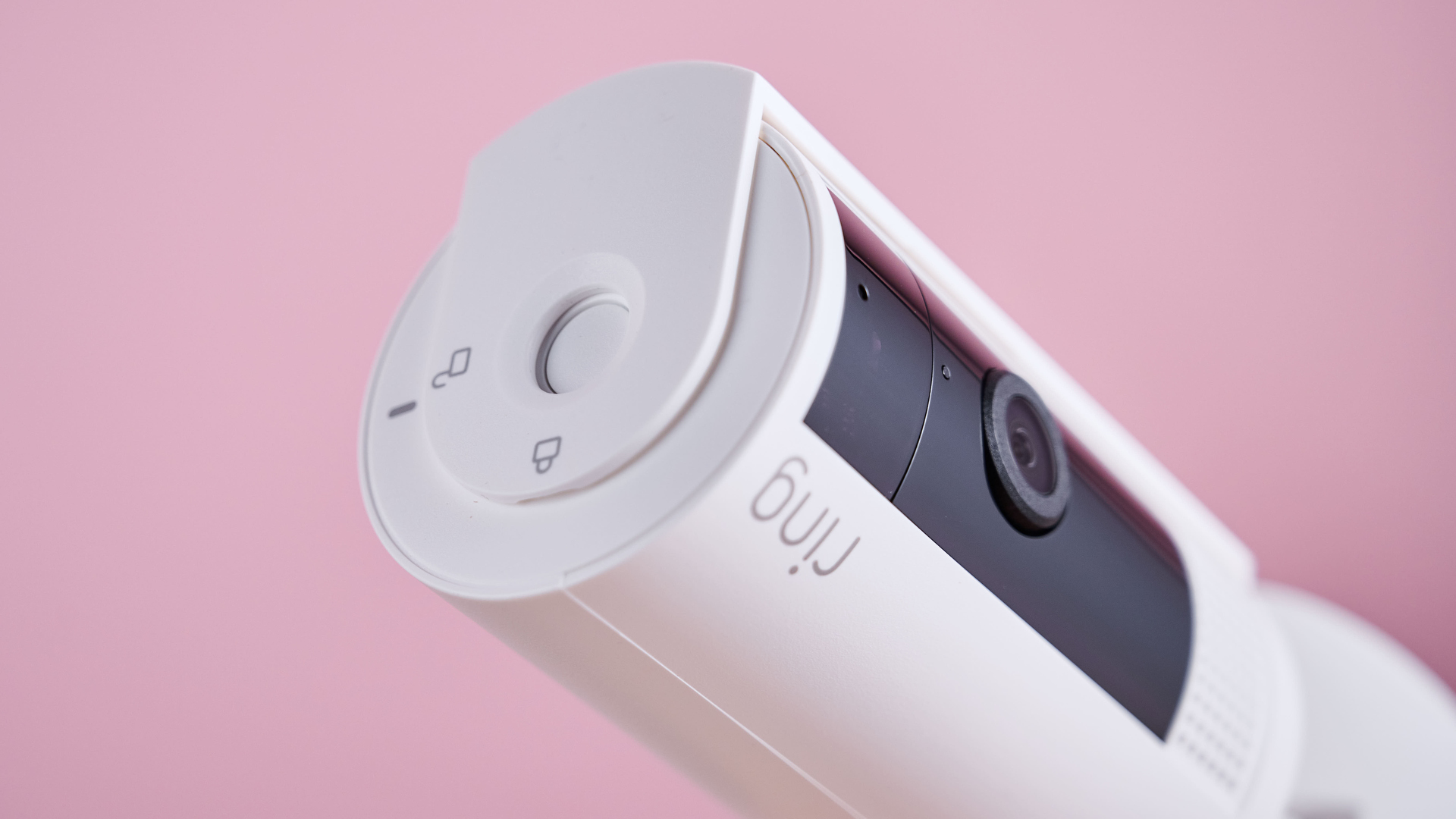
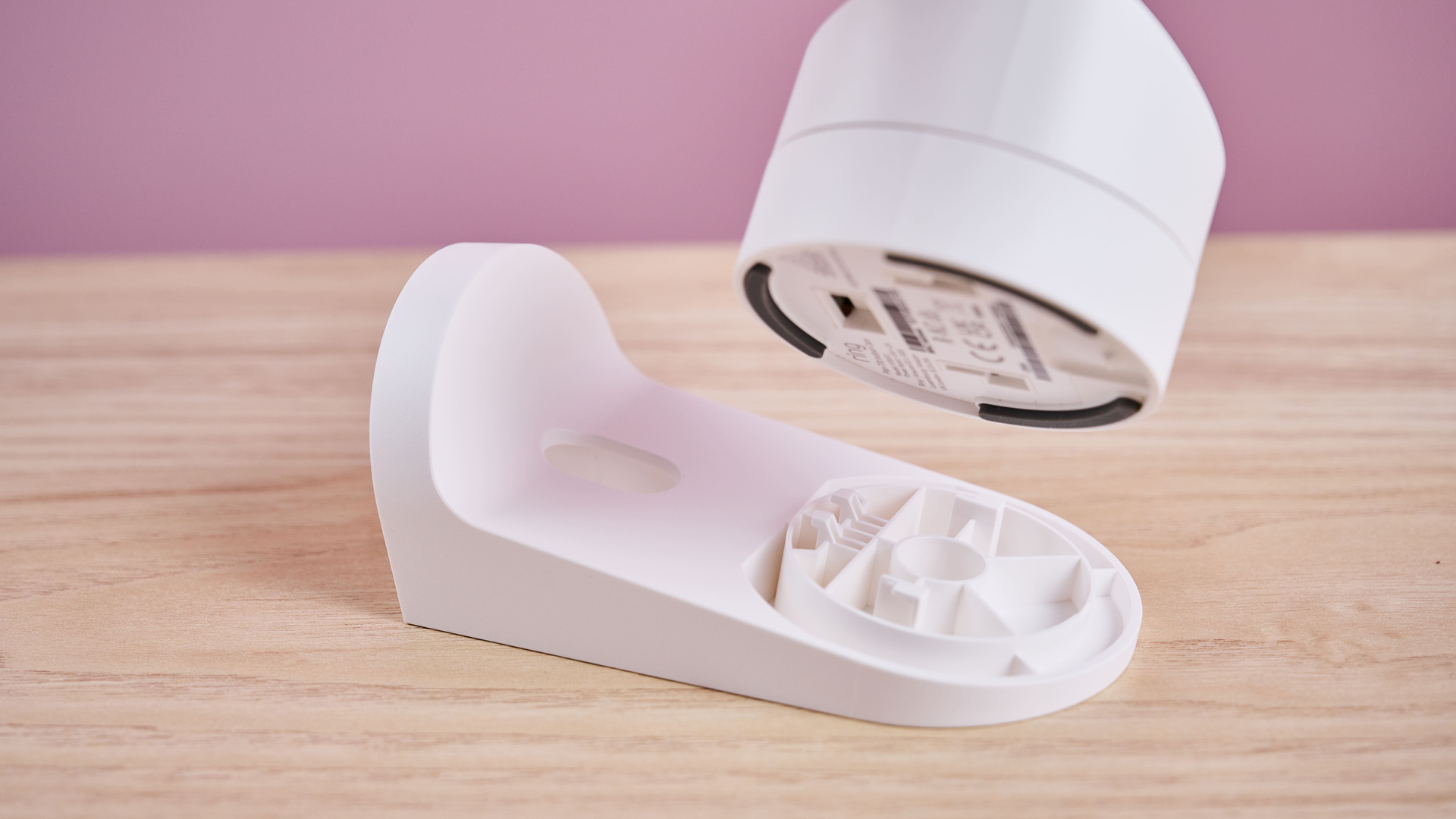
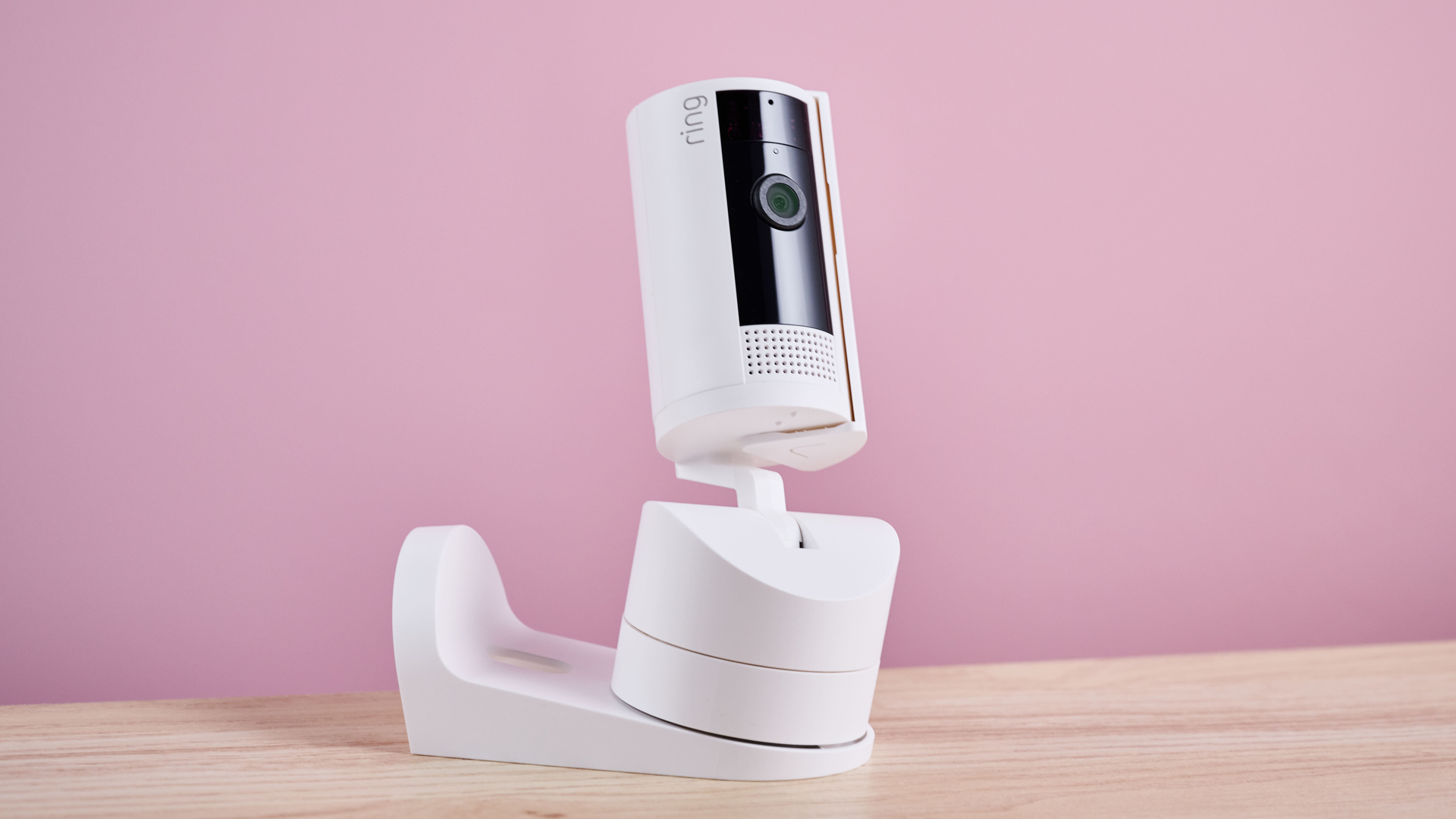
Specifications
Reasons to buy
Reasons to avoid
✅ You want a good view: With 360-degree rotation and 169-degree tilt, this little camera lets you see much more of your room than most home security cameras.
✅ You own other Ring products: This camera will work seamlessly with your other devices, and your existing Ring Home subscription.
❌ You want motion tracking: Somewhat surprisingly considering its range of movement, motion tracking isn't available here/
❌ You don't have a handy power socket: This is a wired camera, so unlike some others, you'll need a power socket within reach.
Ring's latest home security camera is also its best to date, with an impressive feature set and affordable price tag that make it our number one choice. You'll need a Ring Home subscription to get the most out of it - see our guide do I need a Ring subscription for full details - but it's one of the more affordable plans around and will also unlock the full features of any other Ring devices in your home (the company is known for making some of the best video doorbells).
Video is crisp and clear, with footage sent live to your phone or available for up to 180 days online (provided you're a Ring Home subscriber), with motion detection and alerts to let you know if someone enters its field of view. There's also a siren to scare off intruders, which our reviewer Cesci Angell said "was easily enabled by pushing a button on the app via the device's home screen; this caused the camera to make a loud security alarm sound, which I imagine could be capable of scaring off an unwanted guest."
As the name suggests, this little camera's standout feature is its ability to rotate 360 degrees and tilt 169 degrees, which gives you excellent visibility around your room, though it's a little surprising that there's no motion tracking - the camera seems like it would be ideally suited to this. Perhaps something to look forward to in the next model.
Read our full Ring Pan-Tilt Indoor Cam review
The best budget home security camera
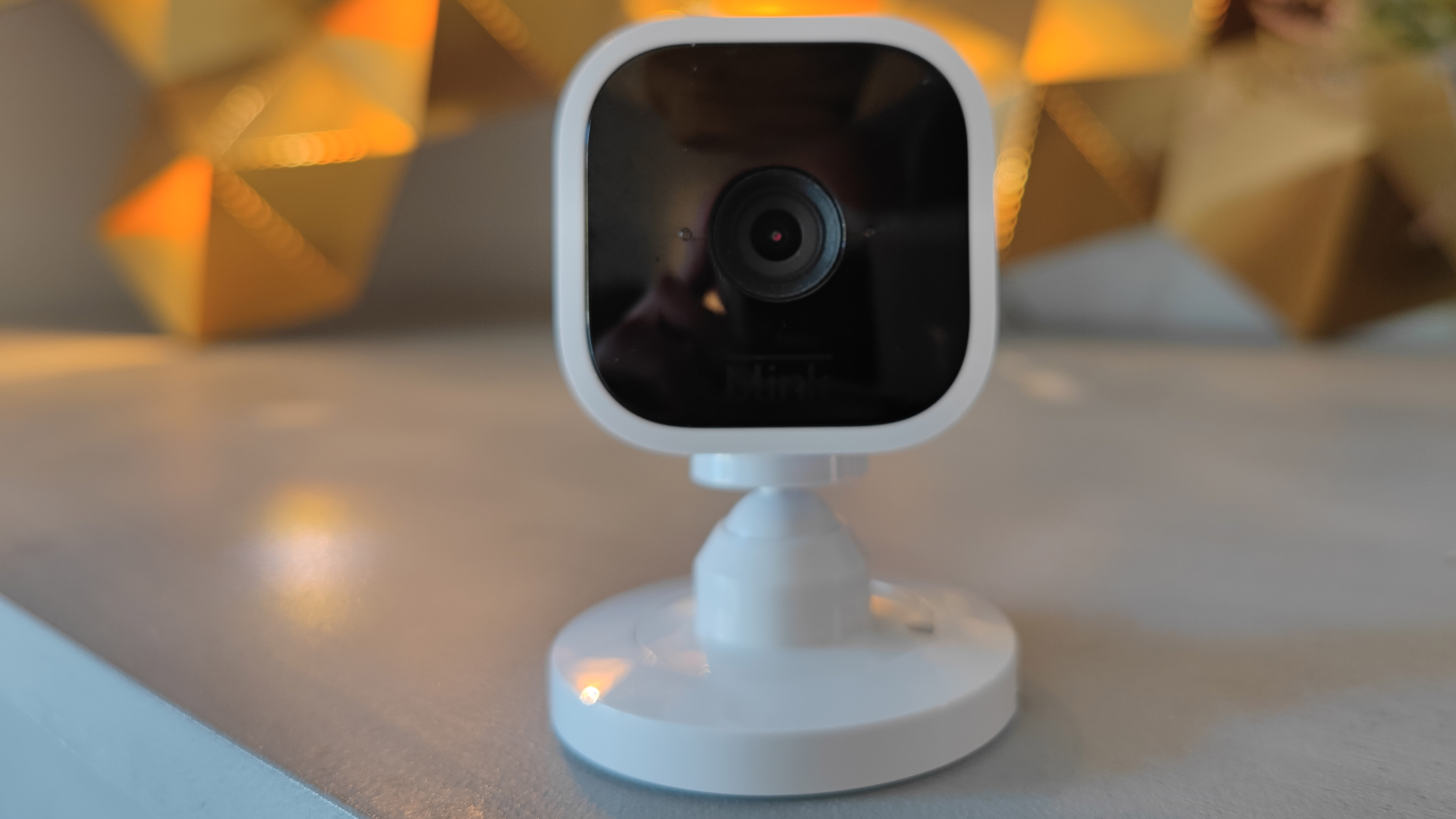
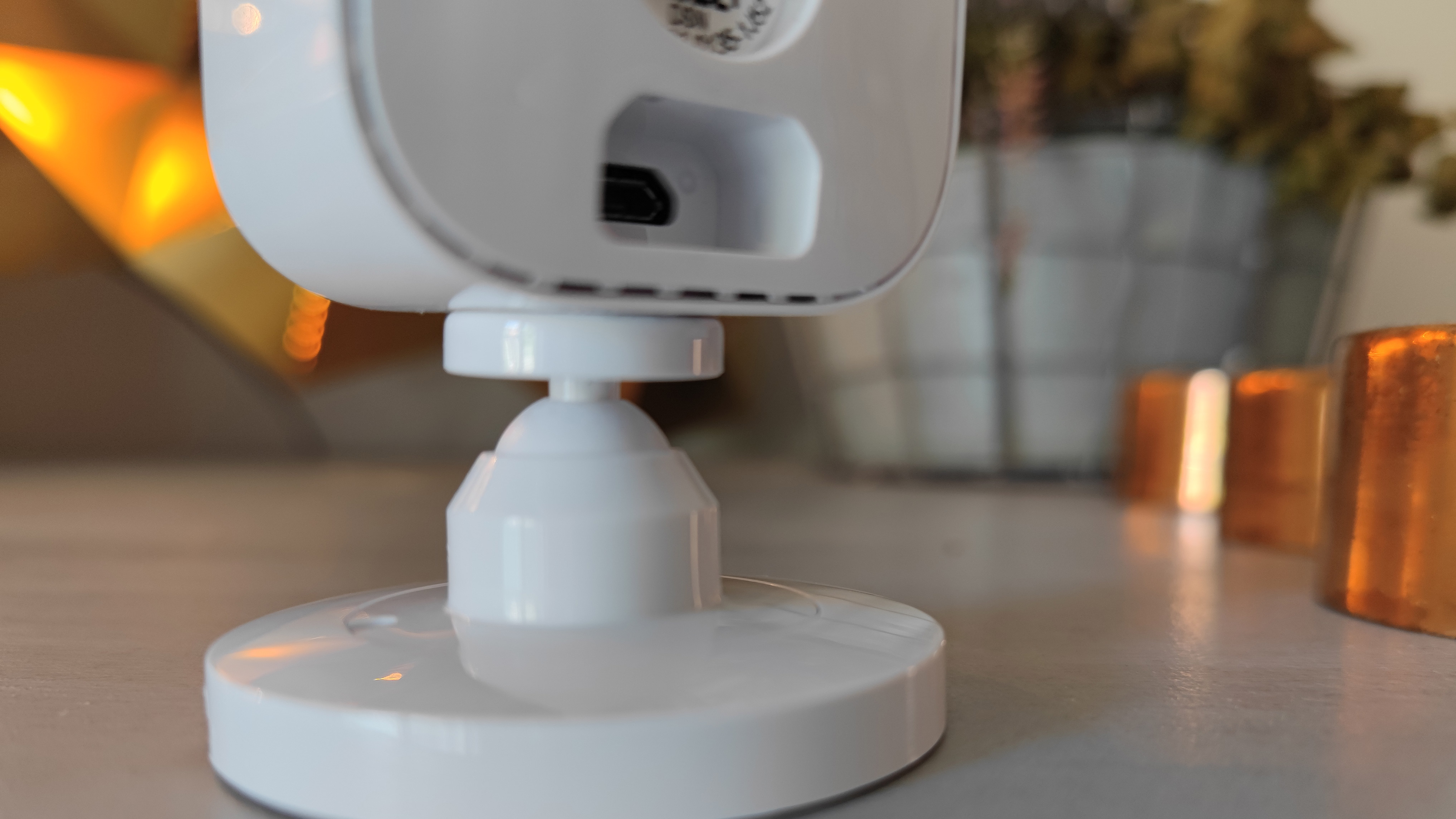
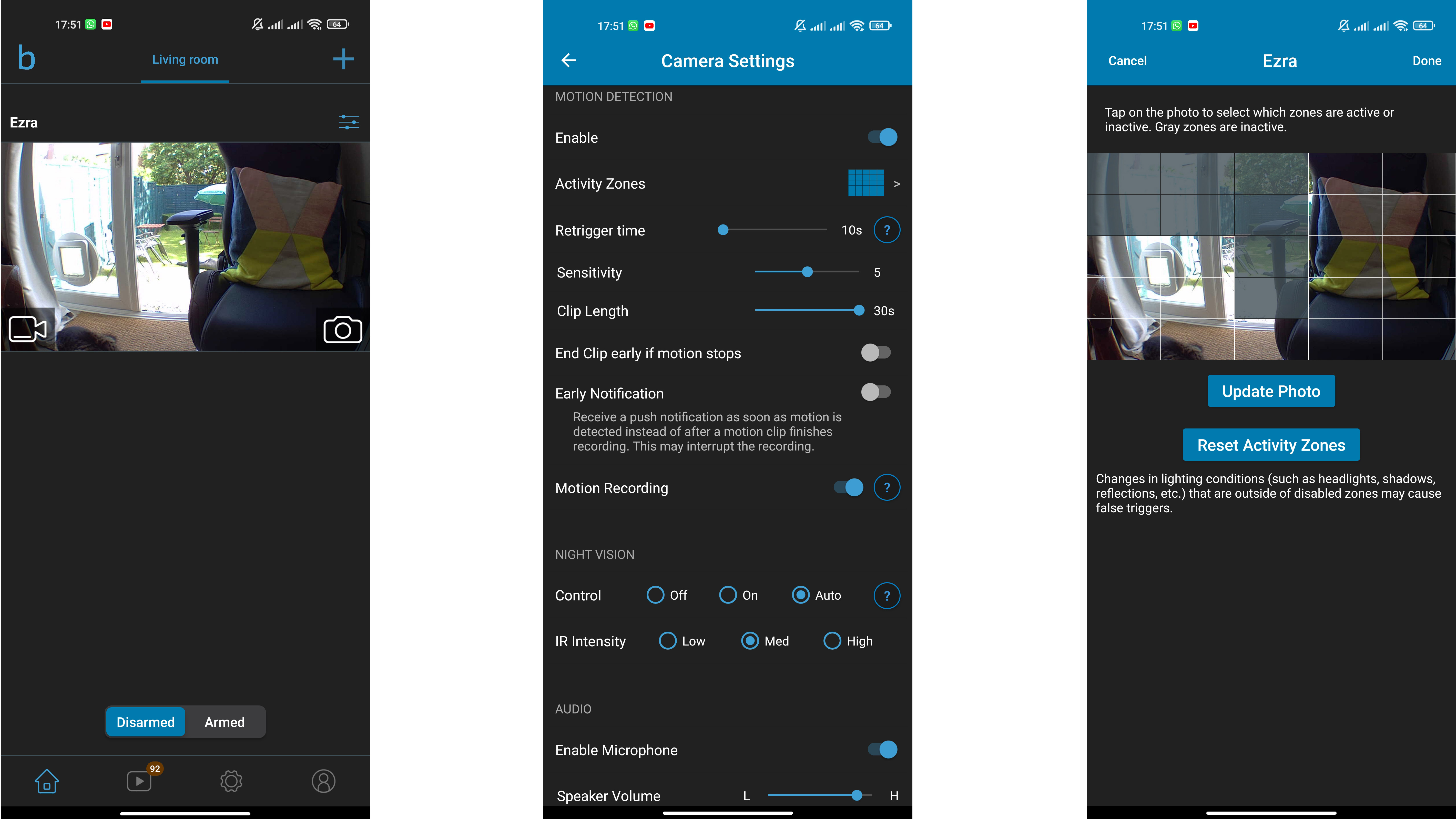
Specifications
Reasons to buy
Reasons to avoid
✅ You have an Amazon Echo Show: The Blink Mini works seamlessly with Alexa devices, and the Echo Show lets you see live footage with a simple command.
✅ You're not worried about storage: Storing video requires an additional module, but that's not a problem if you only want live feeds.
❌ You want person detection: You'll need a more advanced camera for this.
❌ You want to go wireless: If you need a battery-powered camera, take a look at the Blink Outdoor instead.
One of the most affordable home security cameras on the market, the Blink Mini may be compact, but it certainly packs a punch. The full HD footage it records during the day and at night is clear, and we found the camera simple to set up and easy to control using the app.
It offers both cloud and local storage, although you'll need to purchase an additional sync module if you want to use local storage, as unlike the Blink Indoor and the Blink Outdoor, this isn't included. There's a free cloud storage trial bundled with the camera, but you'll need to pay a fee if you want to continue with that option.
The Blink Mini lacks person detection, something the only slightly more expensive Ring Indoor Cam (above) offers, but for those that want a device with a small footprint, you'll be hard pushed to do better than the Blink Mini.
Read our full Blink Mini review
The best home security camera with night vision
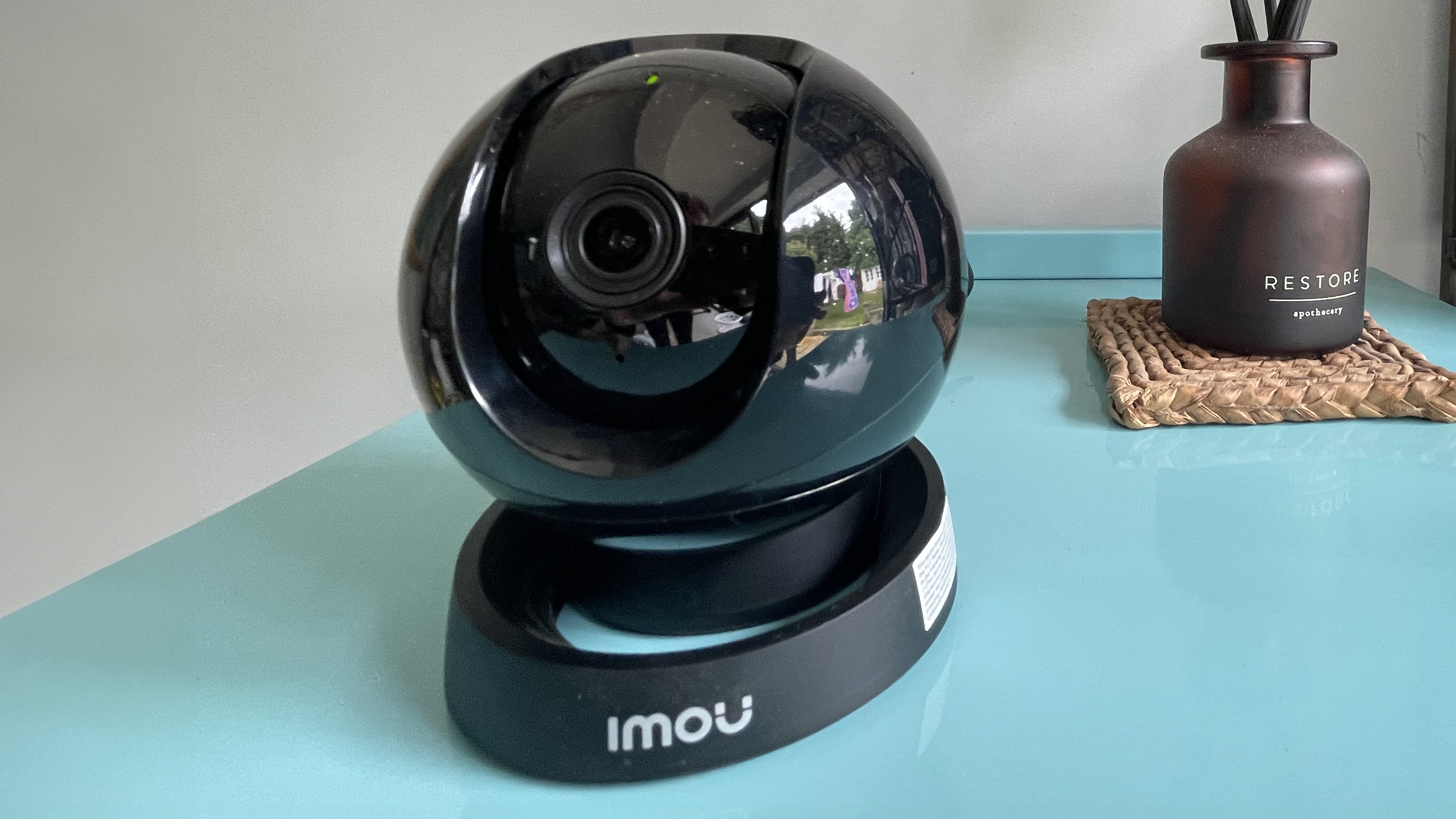
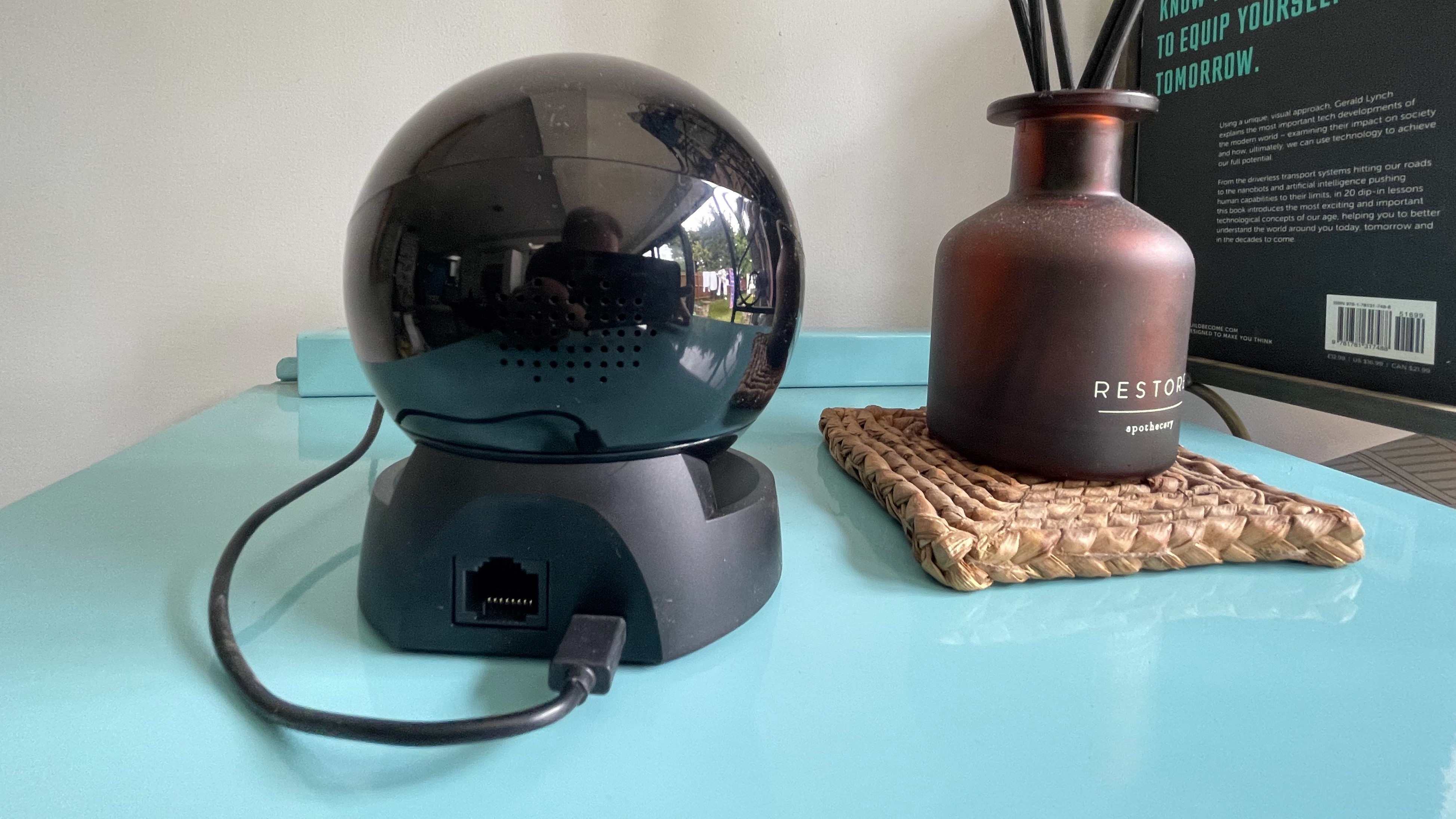
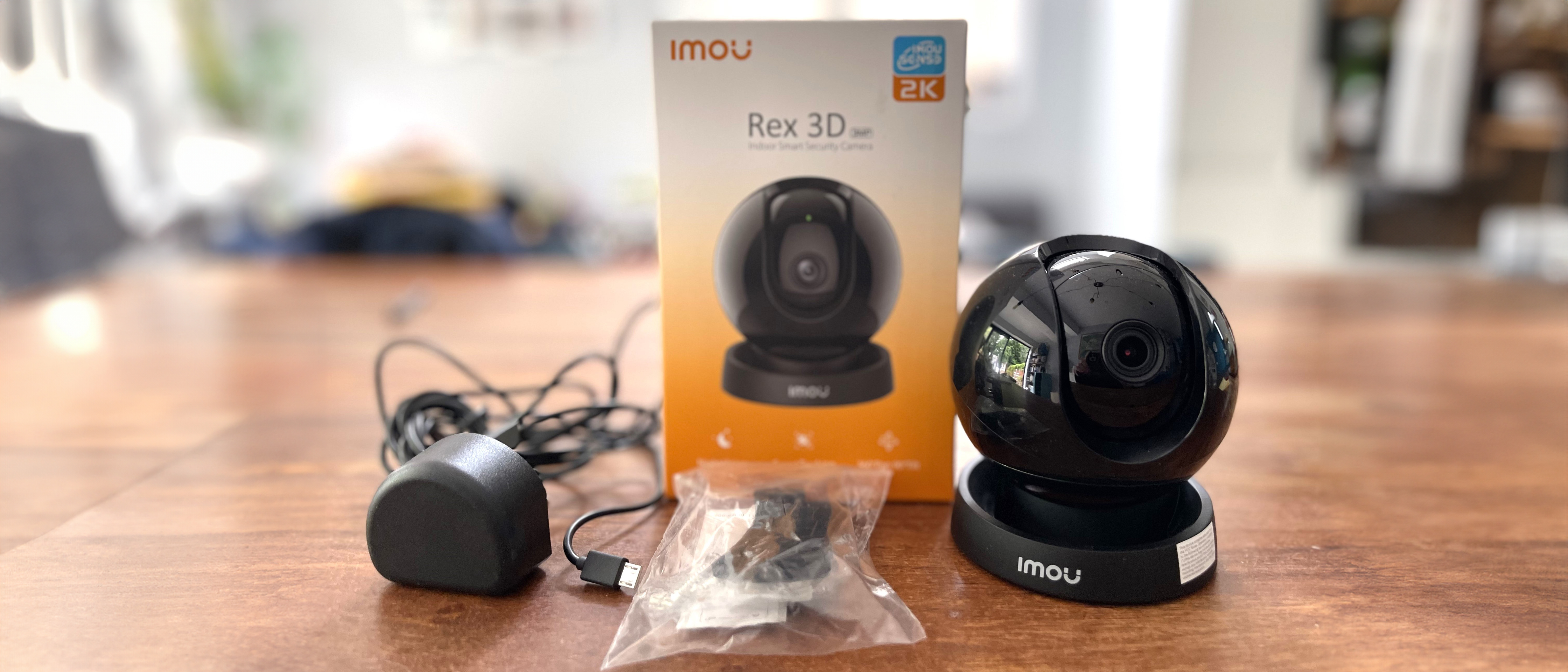
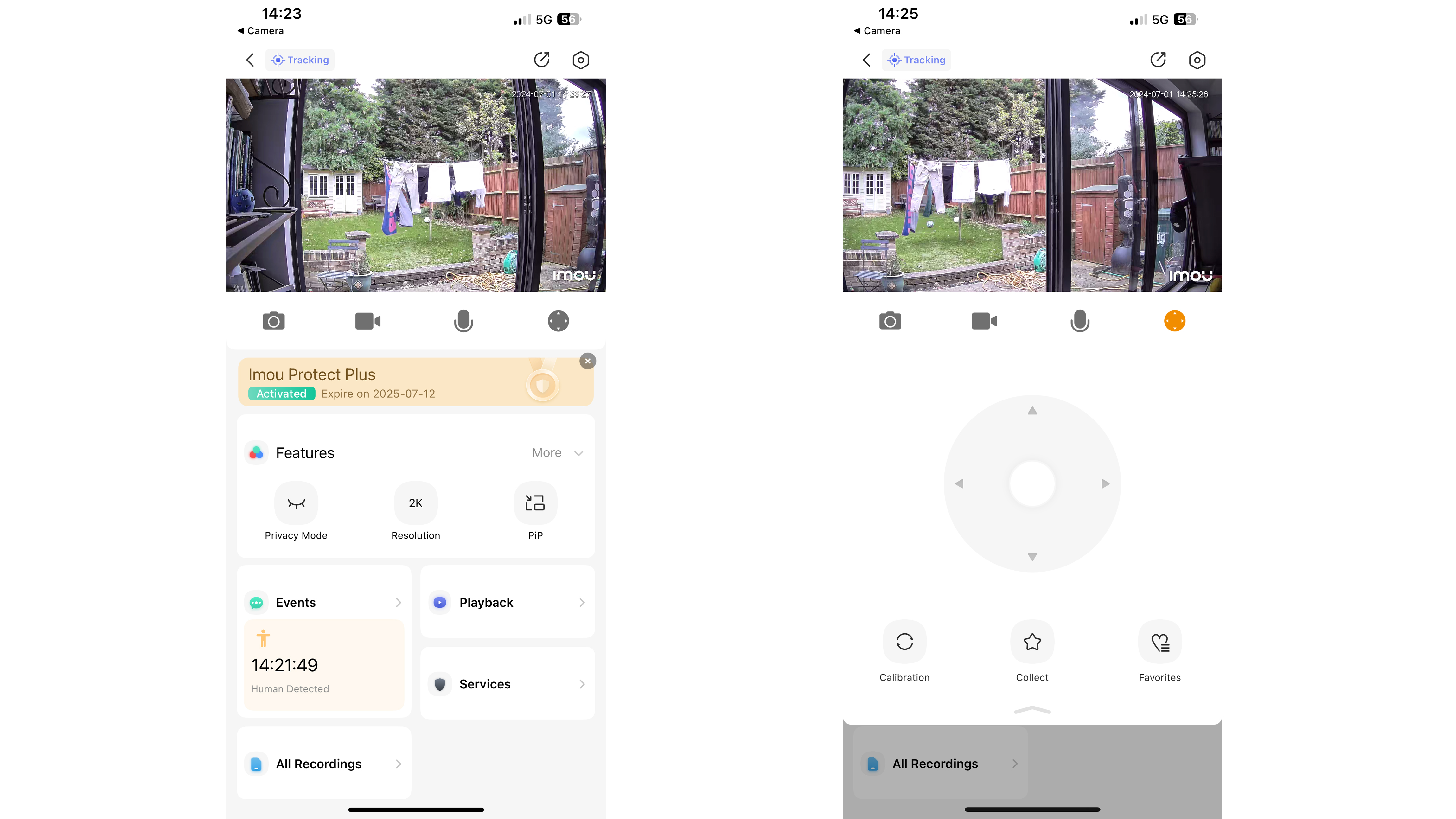
Specifications
Reasons to buy
Reasons to avoid
✅ You own a pet: This camera can detect and differentiate between animals and people.
✅ You want two-way audio: The IMOU Rex lets you chat with guests and pets when you're away from home.
❌ You value simplicity: If you don't need the IMOU Rex's more advanced features, you can save money by opting for the Blink Mini instead.
❌ You need an outdoor camera: The Blink Outdoor is a small, weather-resistant alternative.
Looking for an indoor security camera that can capture footage after dark? The IMOU Rex 3D is an excellent option. Some other cameras claim to record at night, but do so by activating a bright light when motion is detected. The Rex 3D uses infrared to record in low light without disturbing anyone, making it useful for keeping tabs on your home, or watching over your kids.
We found the pan-and-tilt camera easy to set up, and its 3m long power cord gives you plenty of options when deciding where to position it. The picture quality was excellent too (night and day), though in our experience the motion detection was a little over-sensitive, and was often triggered accidentally until we turned it down.
One feature we particularly appreciated was its HDR (high dynamic range) capability, which allows it to capture detail that would normally be lost in bright light or shadow. Need to position it near a window, or in a gloomy corner? No problem.
Read our full IMOU Rex 3D review
The best home security camera for outside
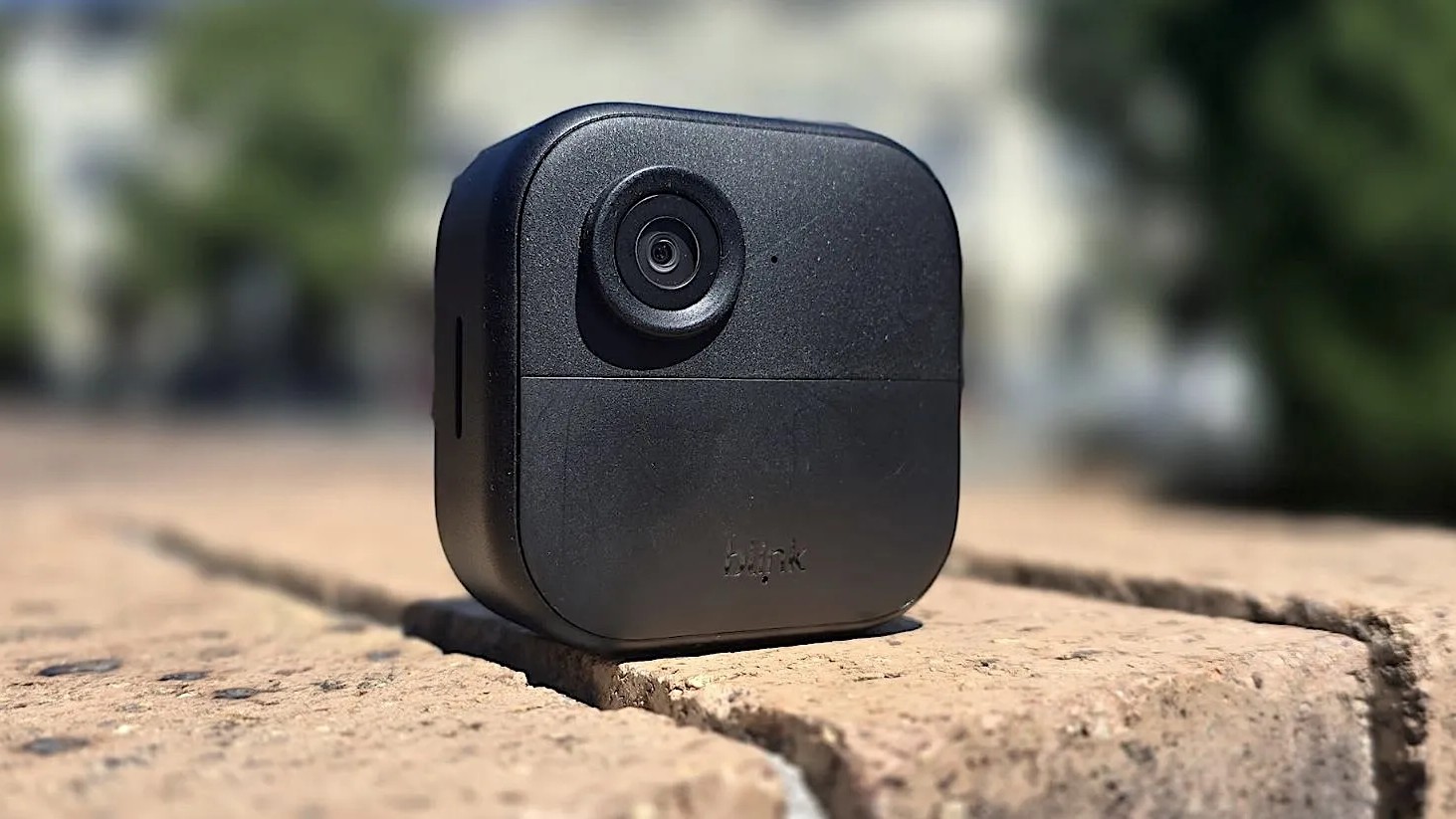
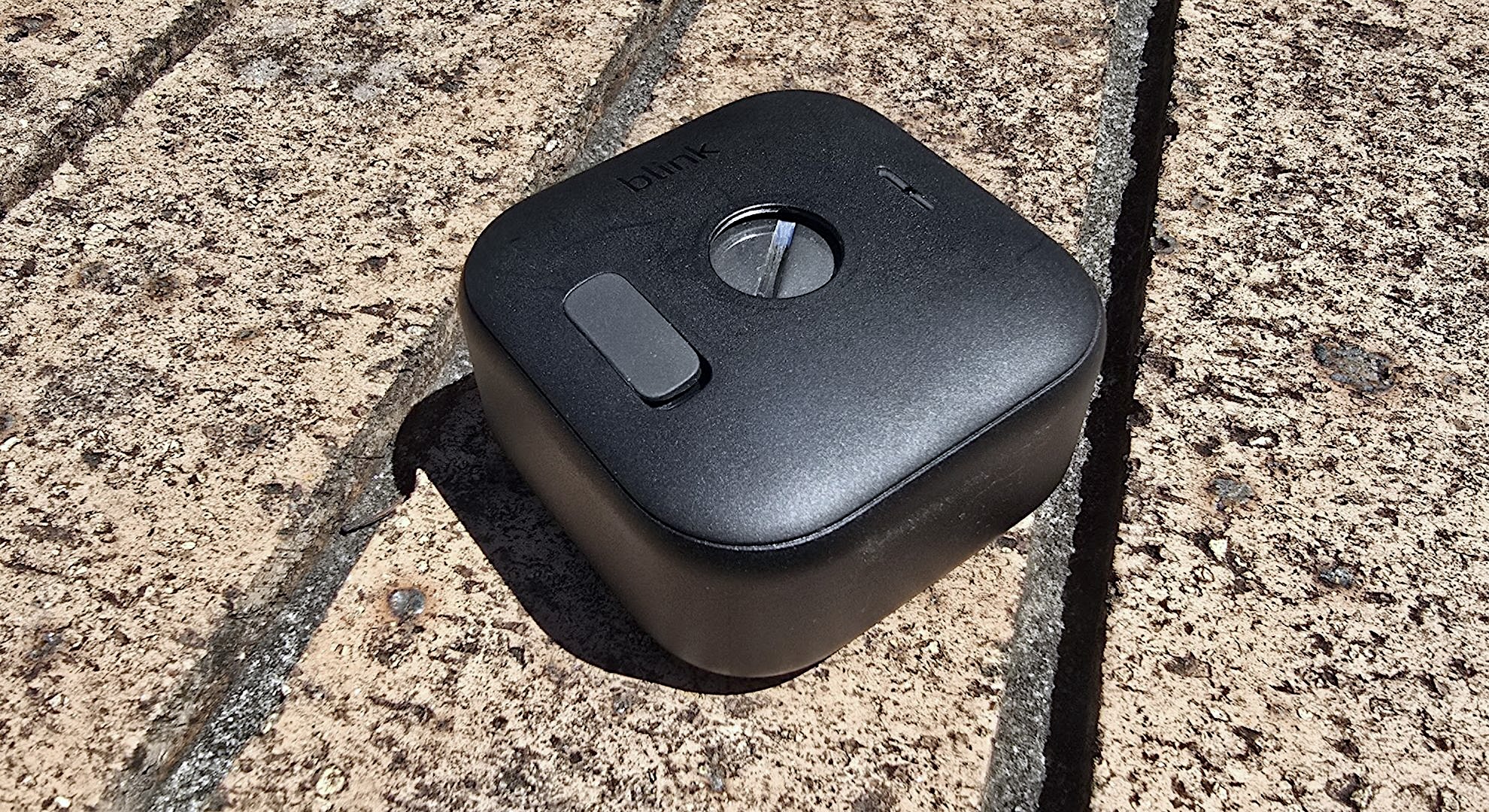
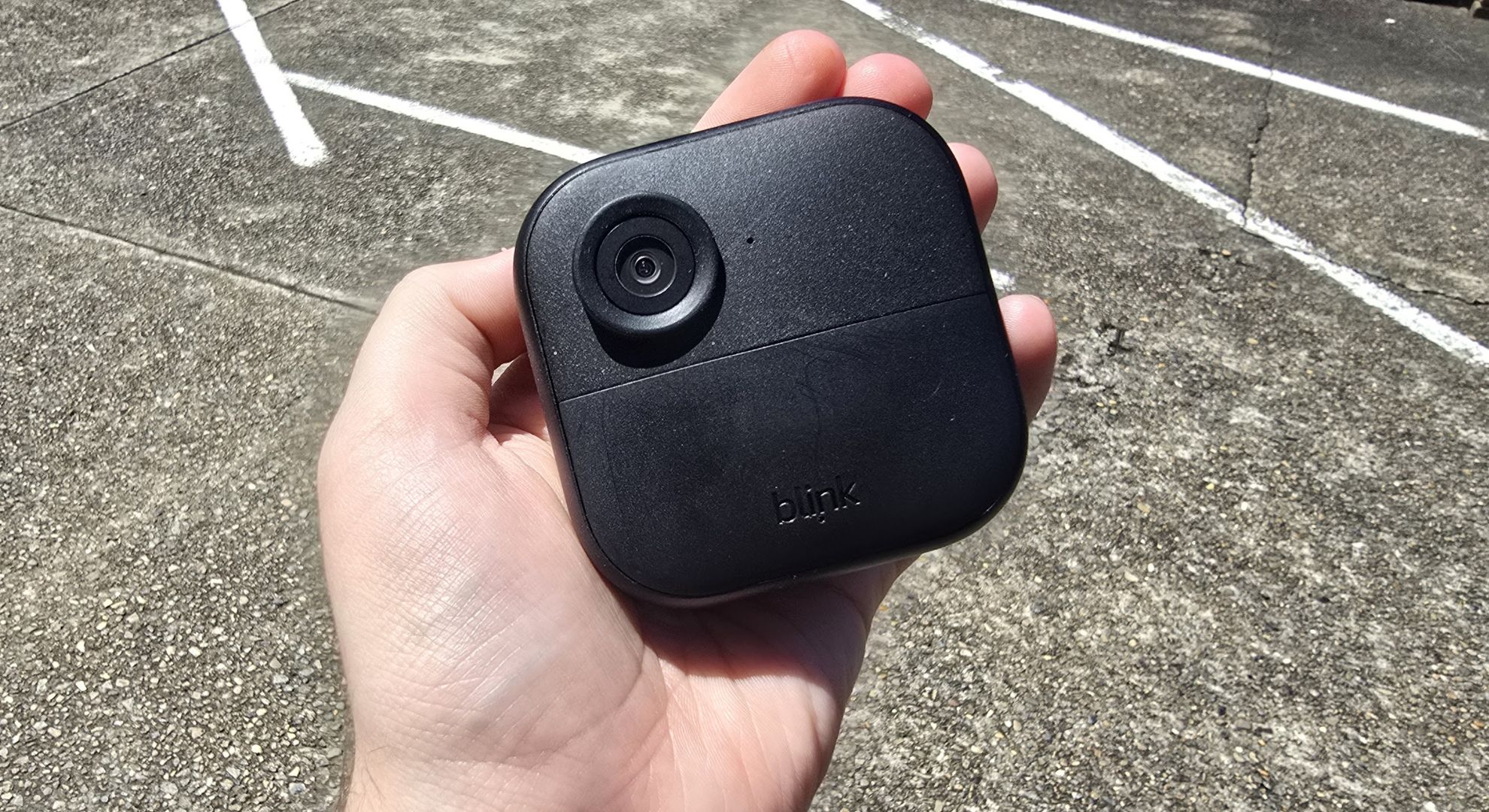
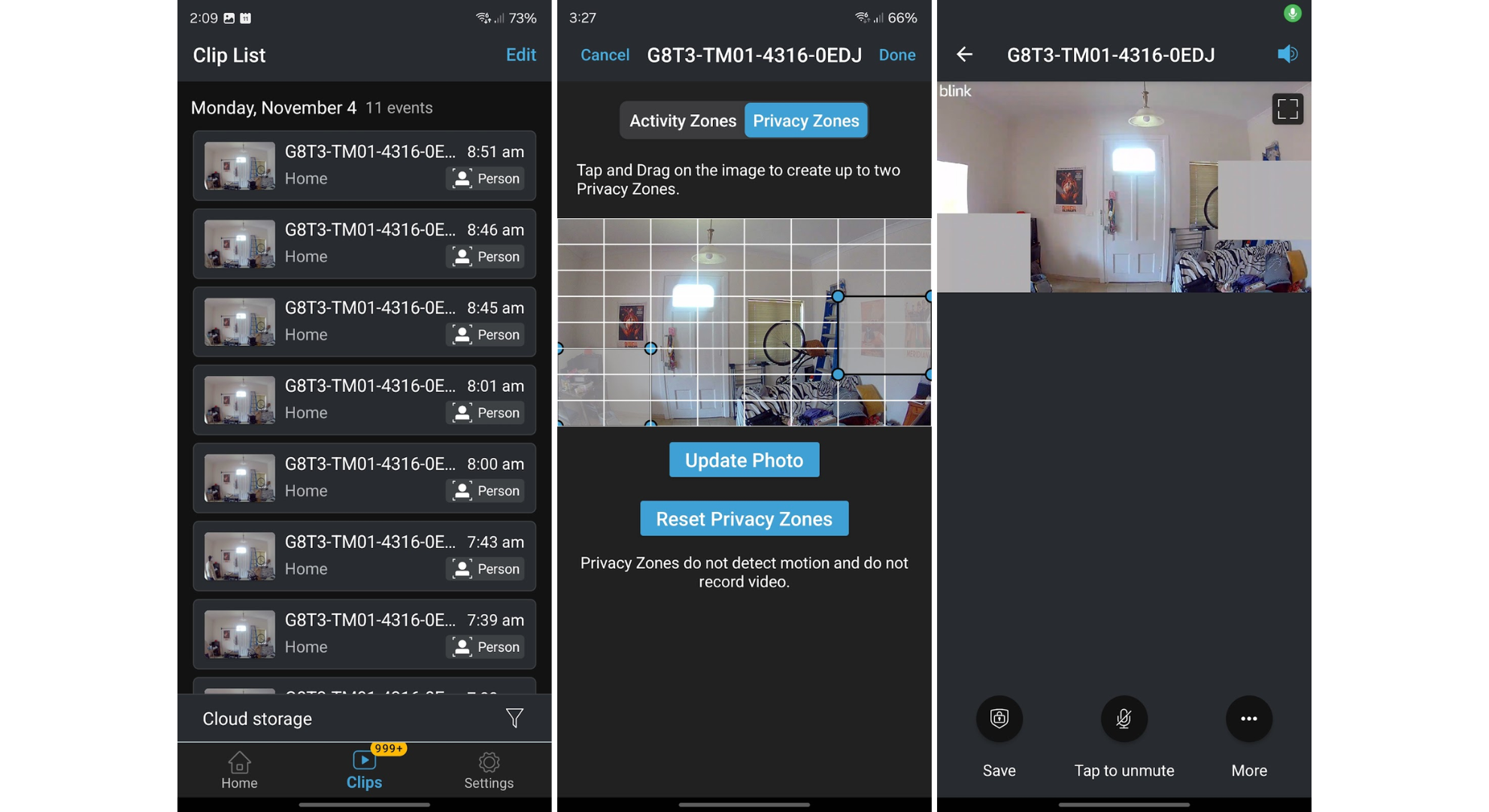
Specifications
Reasons to buy
Reasons to avoid
✅ You want a camera with local storage: The Sync Module 2 lets you connect your own storage media so you don't have to rely on a cloud subscription service.
✅ You want to minimize hassle: With easy setup and battery life of up to two years, this little camera is a piece of cake to use.
❌ You want to upgrade a robust home security system: This is very much an entry-level camera, and isn't compatible with devices outside the Blink ecosystem.
❌ You want the crispest footage: The Blink 4's 1080p video occasionally looks blurry or grainy in suboptimal lighting conditions.
Looking for an entry-level outdoor home security camera? The Blink Outdoor 4 is the one for you. This super affordable little camera (available individually, or in packs containing up to eight) is a piece of cake to set up and use thanks to its fully wireless design and incredible two-year battery life. Just position them wherever you like, and you're good to go.
The 1080p video quality isn't the highest, but it proved fine for most purposes during our tests. Motion detection is reliable and we were impressed by how easy it is to set up motion detection zones in the Blink mobile app.
A paid subscription plan isn't essential to use the Blink Outdoor 4, and you can save footage locally using the Sync Module 2, which is included with the camera, and your own external storage. That's an impressive feature for such an affordably-priced device. Subscribers benefit from extras such as unlimited 60-day cloud storage and photo capture, but it's definitely nice to have rather than mandatory.
If you already have an outdoor camera system and want to upgrade it to something more sophisticated, take a look at the Arlo Ultra 2. It's one of the most expensive outdoor cameras we've tested at TechRadar, but its reliability and the fidelity of its footage are hard to beat.
Read our full Blink Outdoor 4 review
The best home security camera with local storage
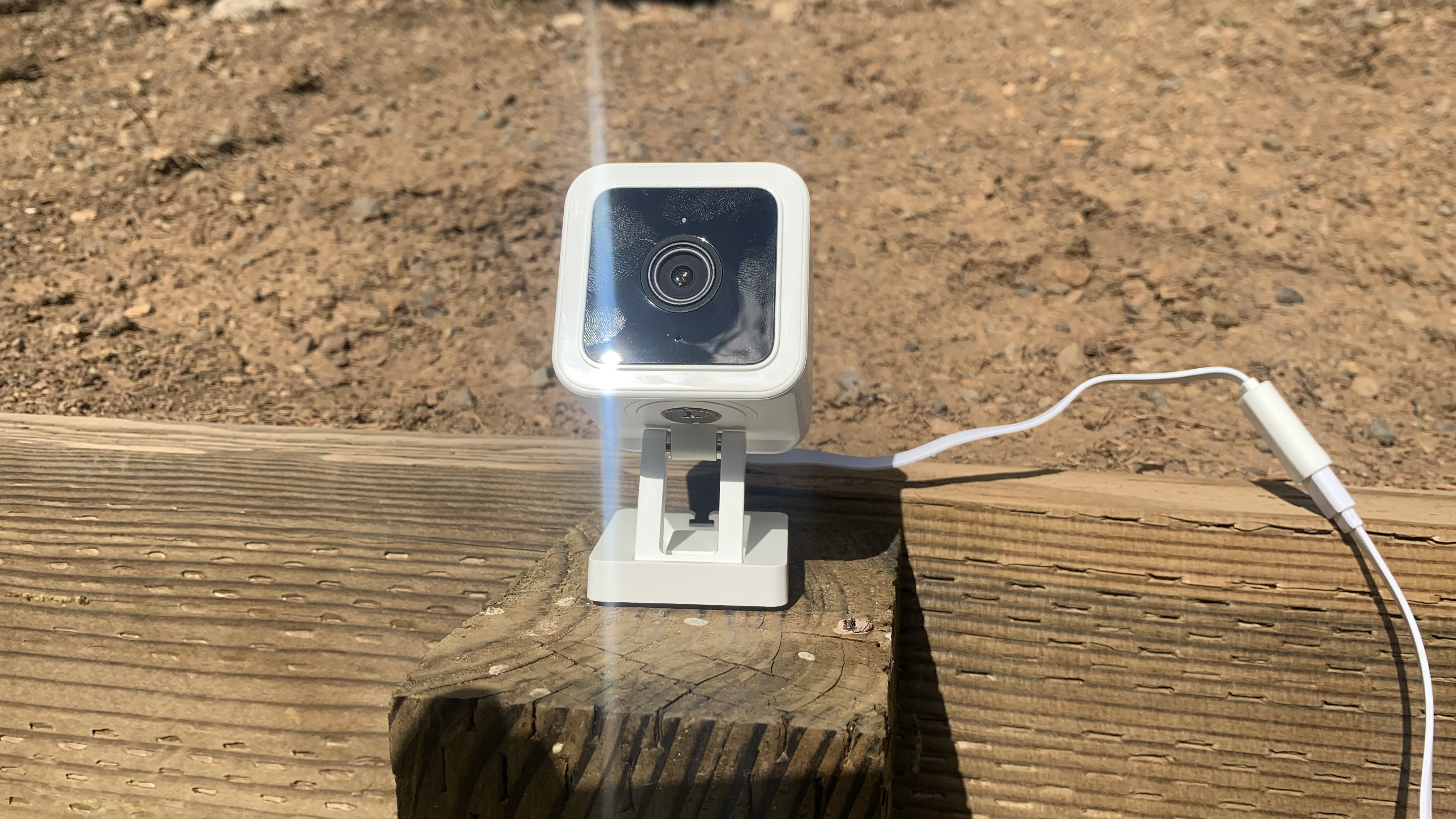
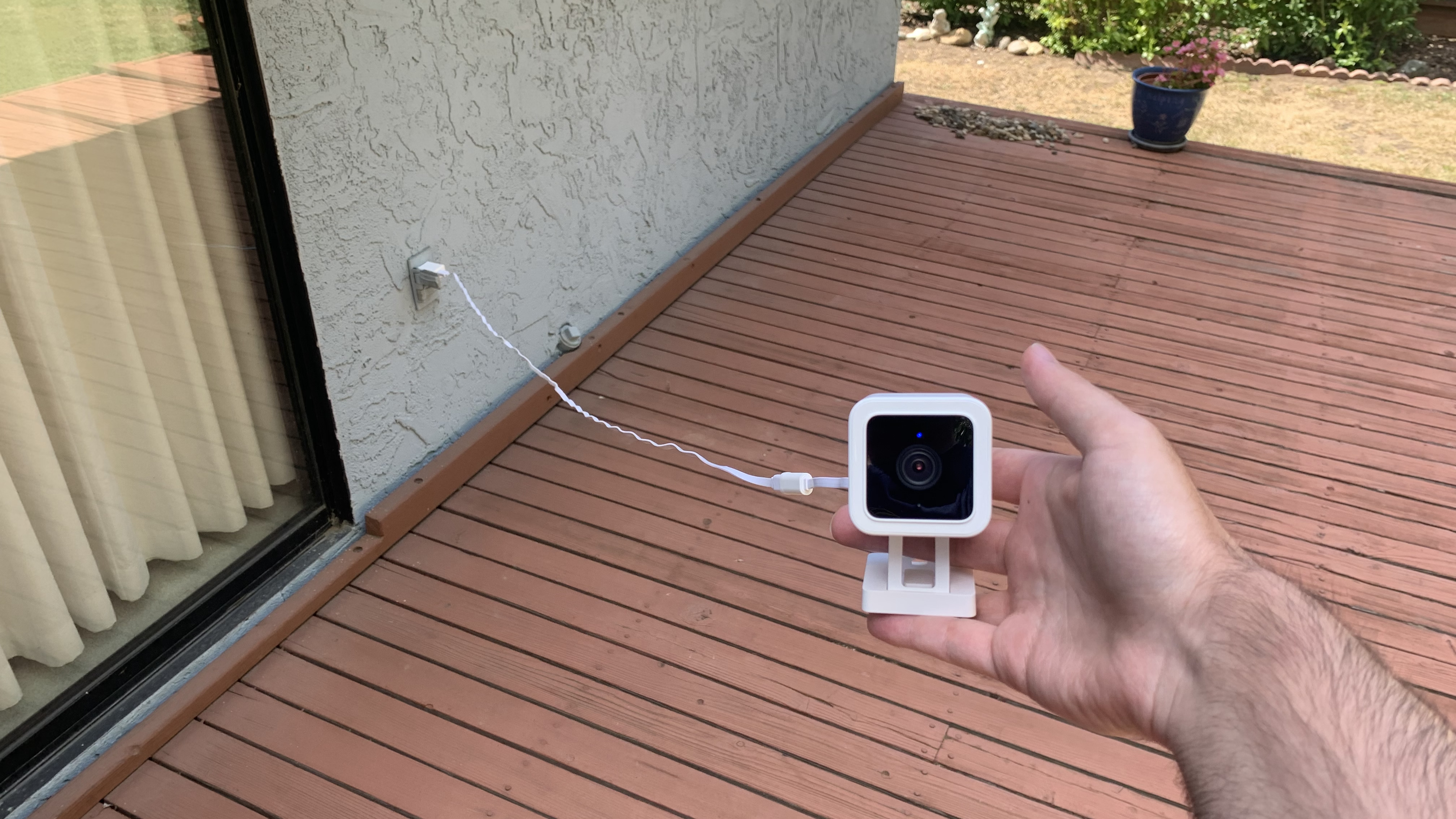
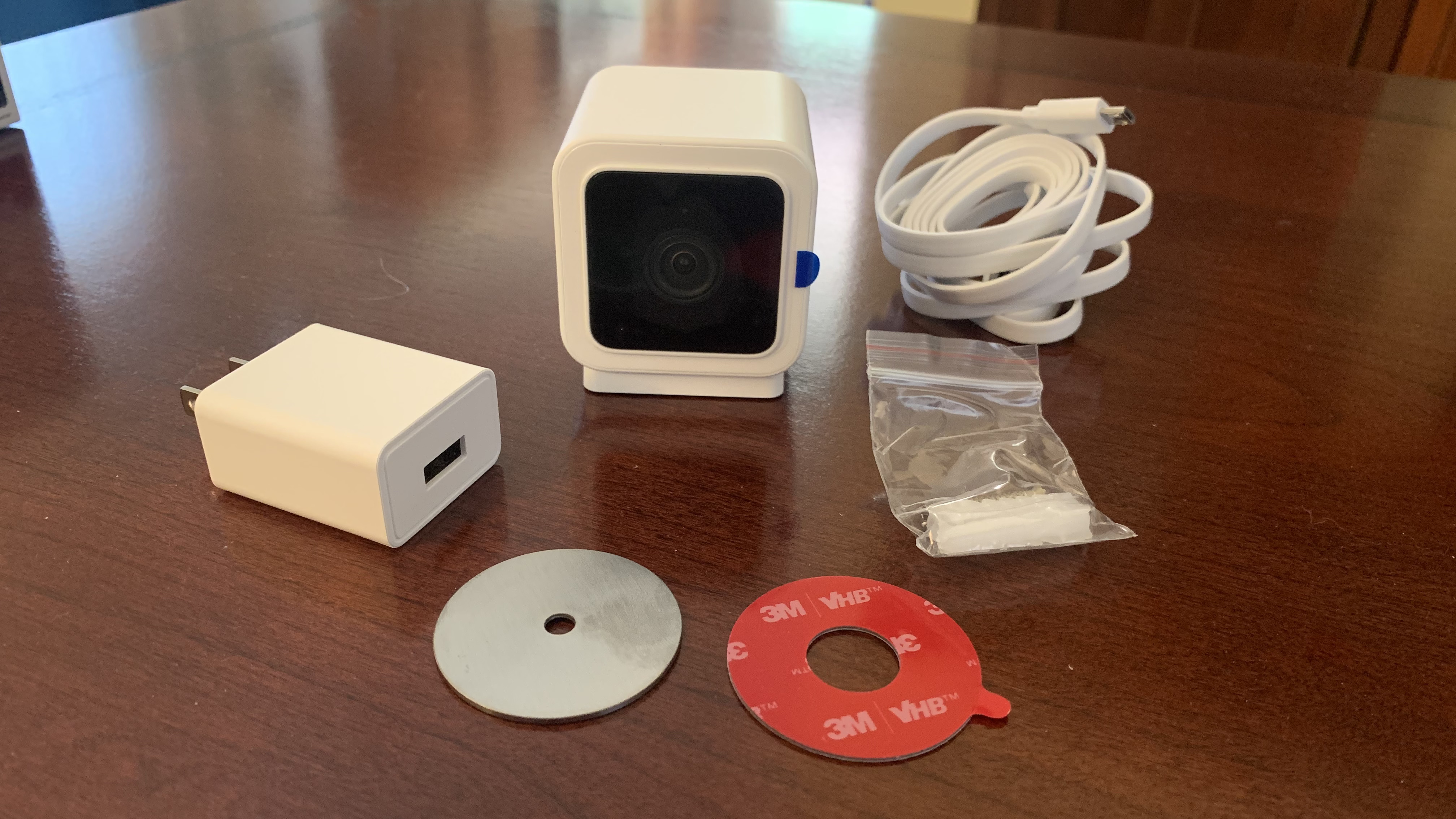
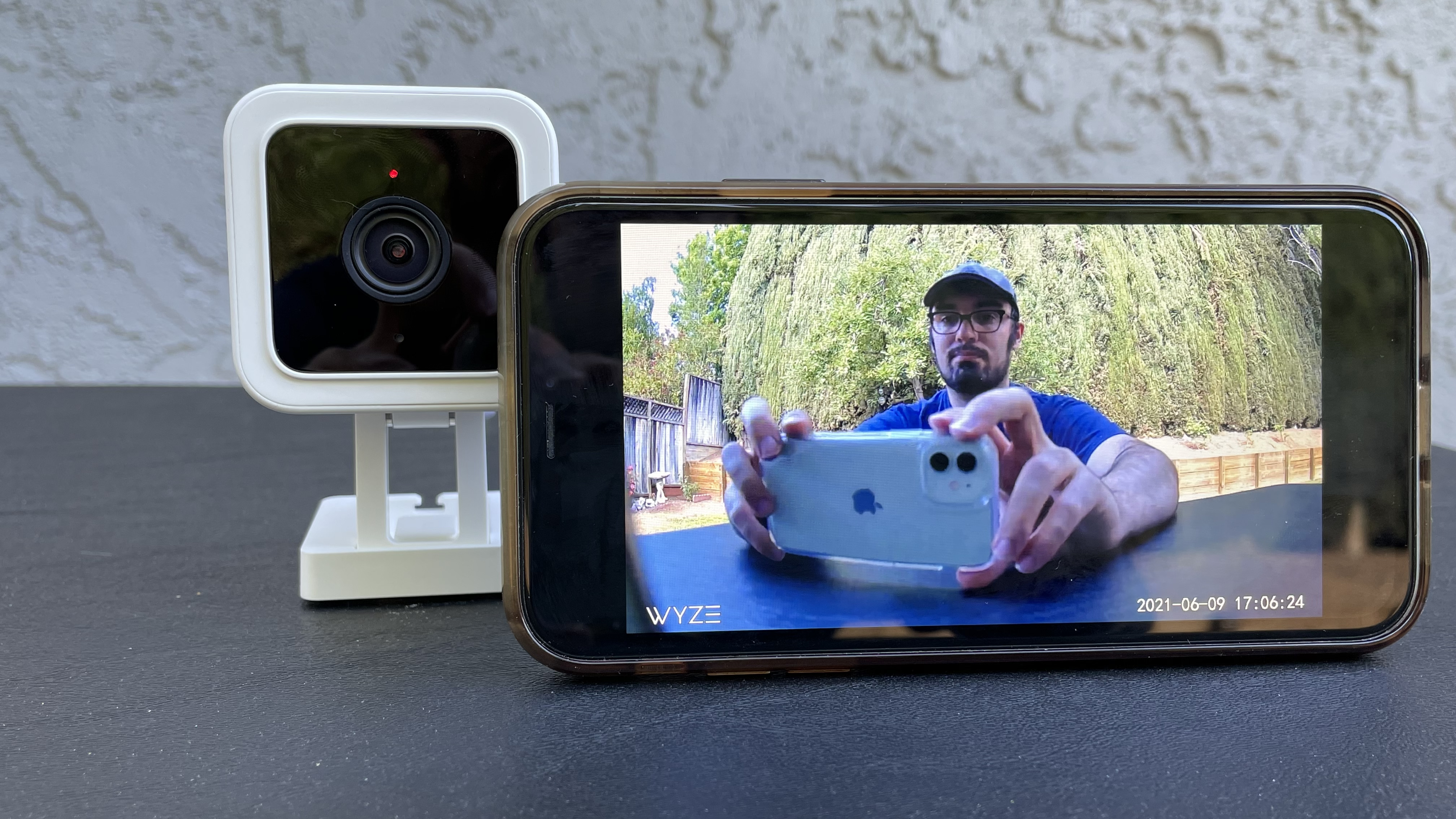
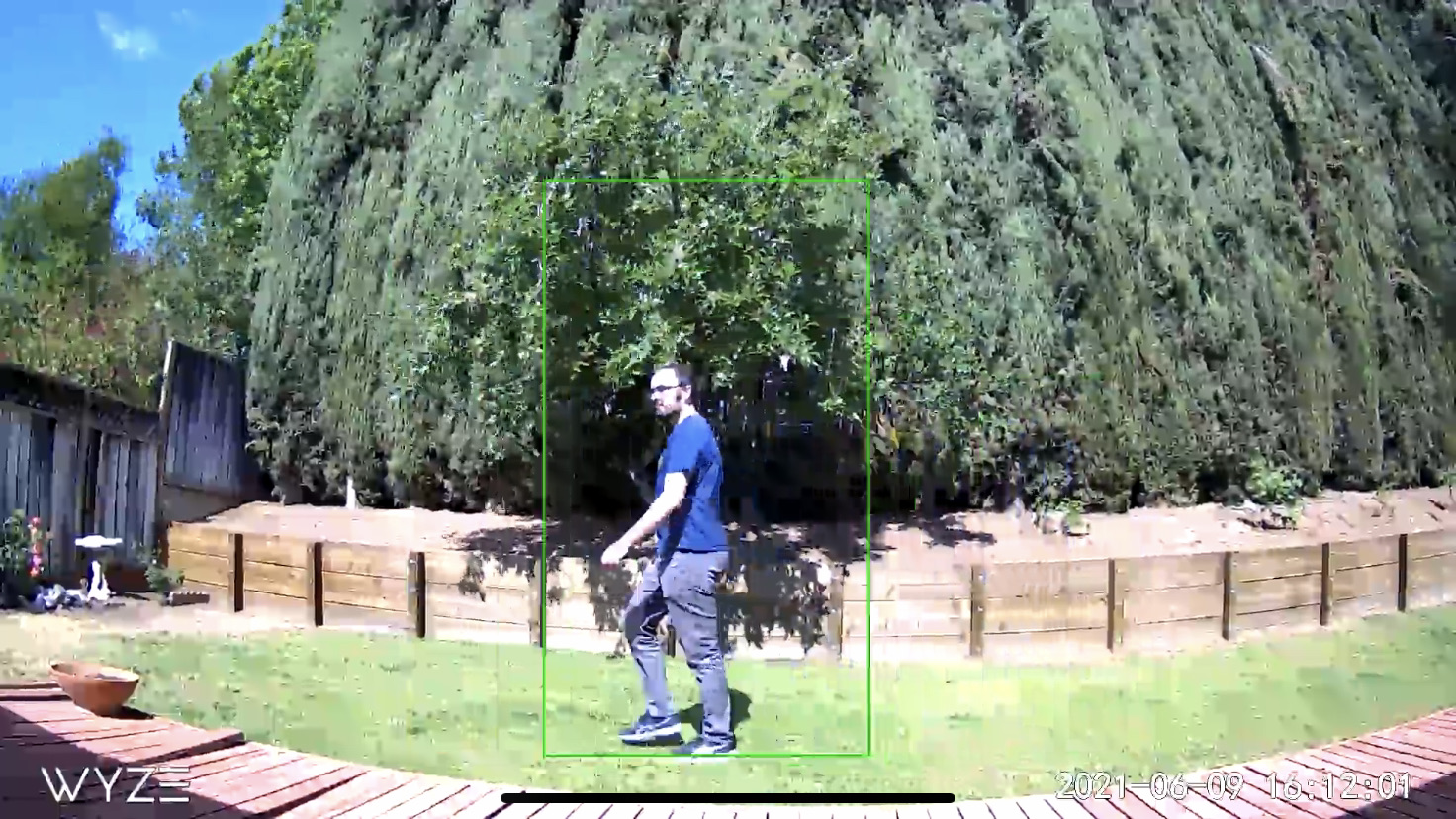
Specifications
Reasons to buy
Reasons to avoid
✅ You need 24/7 recording: With 32GB local storage, the Wyze Cam v3 can record continuously for days.
✅ You want discreet night recording: Most cameras rely on spotlights to capture footage after dark, but not this one.
❌ You want super clear footage: The picture quality from the Wyze Cam v3 is only average. If you want more clarity, look for a 2k or even 4k camera instead.
❌ You need flexibility with positioning: This camera's power lead is only 6ft long, which limits your options
If you're looking for an indoor/outdoor home security camera on a budget, you'll be hard pushed to do better than the Wyze Cam v3. This full HD camera records clear footage during the day and at night and comes with free cloud storage for up to 14 days and a Micro SD card slot for local storage, making it a more than worthy competitor to other budget cameras.
It's one of the few outdoor home security cameras with an integrated stand, so it doesn't have to be mounted to a wall, although it can be if you'd prefer. That said, it requires a power outlet rather than a rechargeable battery, which may limit outdoor use depending on your setup.
If you're not willing to pay for a monthly subscription, you'll miss out on person detection, but on test we found it works perfectly well subscription-free.
Read our full Wyze Cam v3 review
The best home security camera for renters

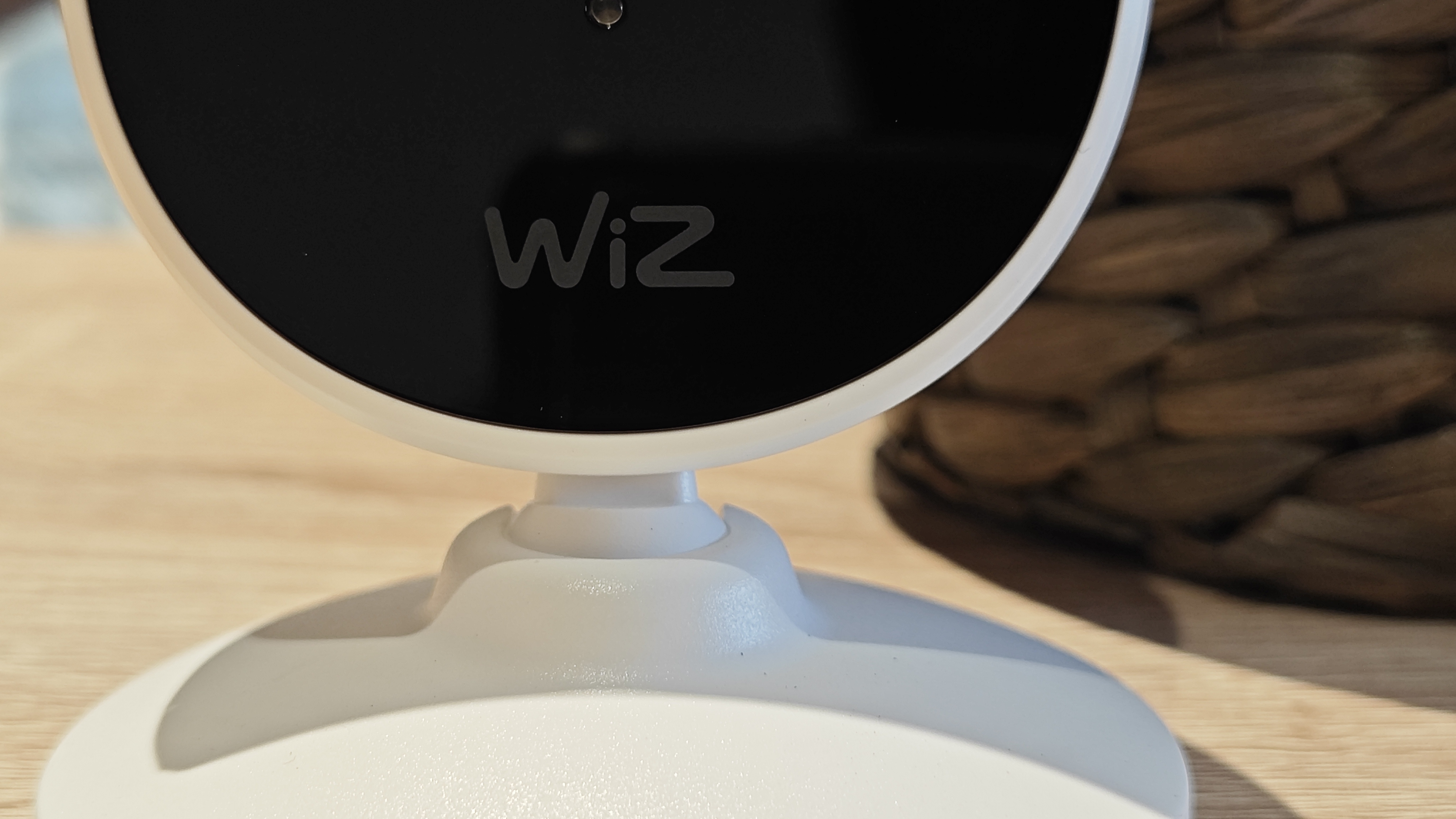
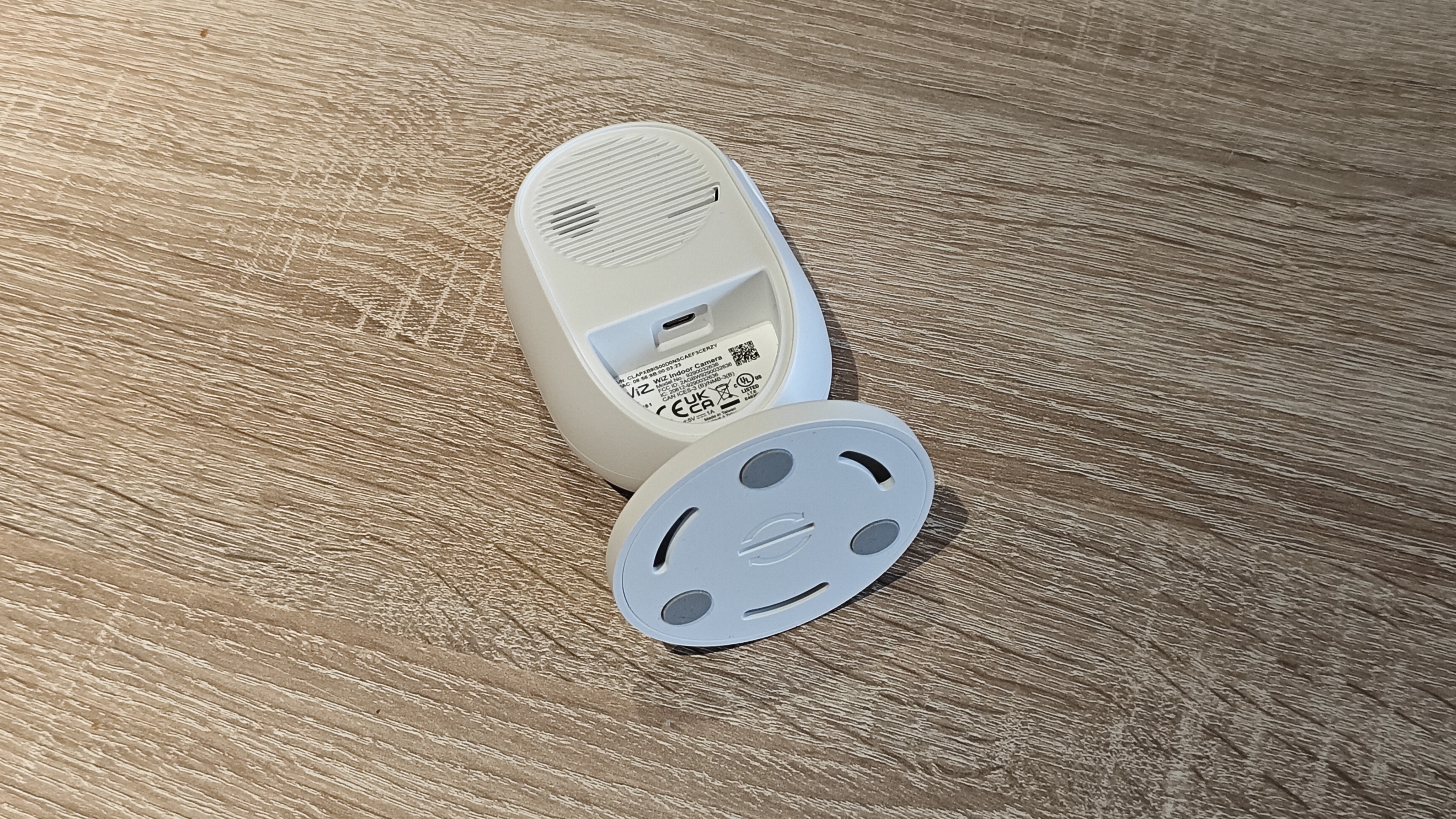
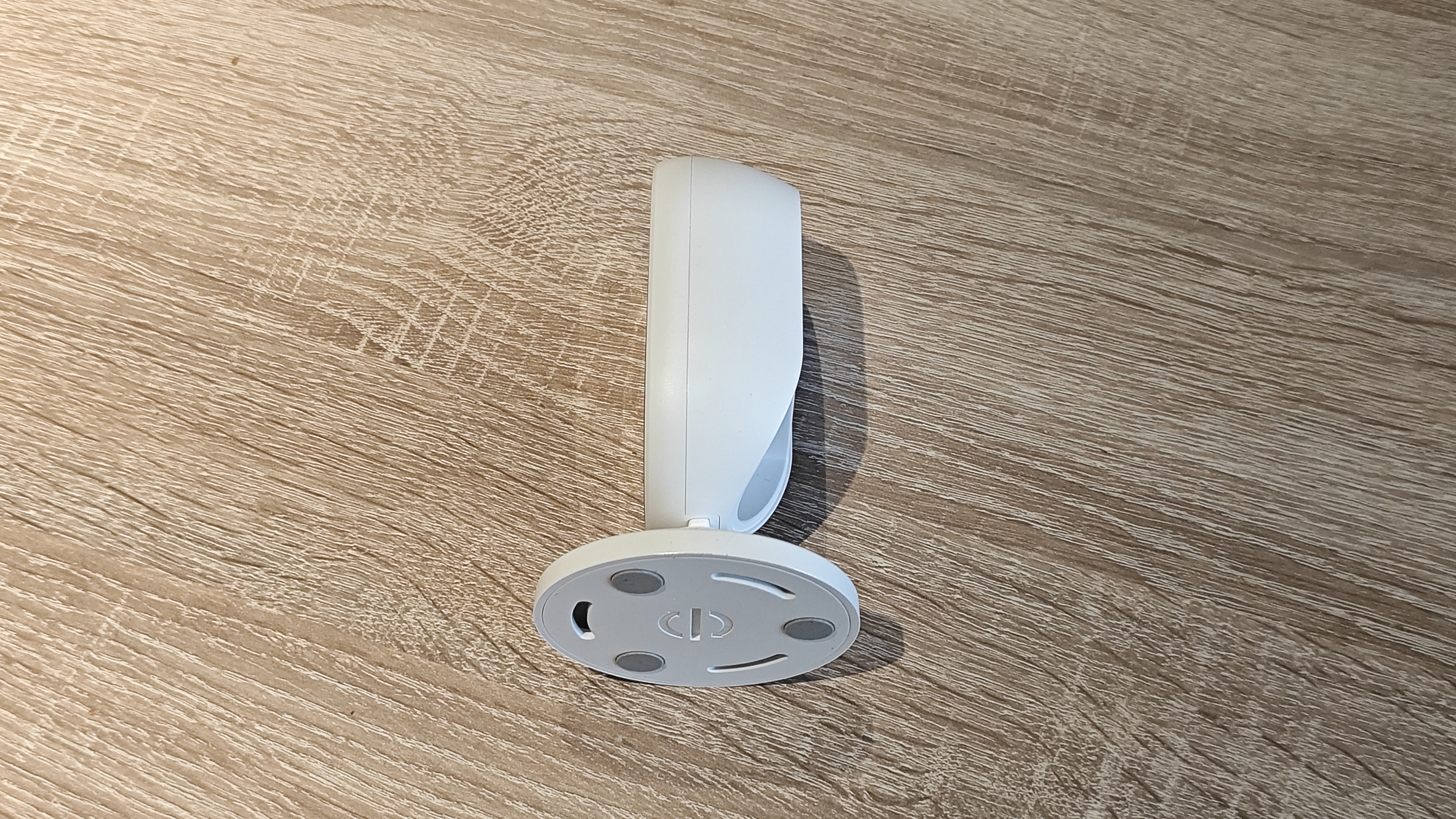
Specifications
Reasons to buy
Reasons to avoid
✅ You don't want to make holes in your walls: This camera can be used free-standing so you won't damage your landlord's property.
✅ You don't want to pay a subscription: A monthly plan is available for some advanced features, but it's not essential.
❌ You value style: This isn't the best looking home security camera around, focusing on function over form.
❌ You want the best quality footage: The WiZ Indoor Camera has a relatively narrow field of view, which is fine for small rooms but not ideal for large spaces.
The WiZ Indoor Camera is the company’s first foray into home security, and it's particularly well suited to renters and folks living in apartments.
It can be used free-standing, so there's no need to drill holes in your landlord's walls, and thanks to its SD card slot you don’t need to tie yourself into a long subscription to store footage. You also have a lot of customization available without making additional paymentes, though a subscription will offer 30 days of cloud storage, activity zones, and manual recording.
The WiZ Indoor Camera also comes with some other interesting features including SpaceSense, which works in conjunction with other WiZ lights to detect motion wherever you have the camera set up. Lastly, this security camera is compatible with Matter, Alexa, Google, SmartThings, and IFTTT so you should be able to pair it with just about any smart ecosystem.
Read our full WiZ Indoor Camera review
We've also tested
We're constantly testing new home security cameras at TechRadar. Here are some of the ones that didn't make it into our top six.
Arlo Essential Indoor Camera
This camera offers excellent video quality, but despite its name, it has a premium price tag that makes it harder to recommend than the other devices in this guide - especially when you factor in the cost of a subscription.
Read our full Arlo Essential Indoor Camera review
Ring Floodlight Cam Wired Pro
A heavy-duty external security camera, the Ring Floodlight Cam Wired Pro has two 1,000 lumen spotlights and a siren, but will be overkill for most home owners and requires existing wiring for installation.
Read our full Ring Floodlight Cam Wired Pro review
Blink Outdoor
A good outdoor security camera with much better battery life than most, and impressive motion detection, but not as robust as we'd like. Its glossy surface scratches easily, which is a shame.
Read our full Blink Outdoor review
Psync Camera Genie S
AI is this camera's main selling point, allowing it to tell you what it can see - in theory at least. Its image quality is very good, but during our testing the AI-generated descriptions were hit-and-miss, with the software 'hallucinating' people and objects that weren't there.
Read our full Psync Camera Genie S review
How to choose the best home security camera for you
Start by determining whether you need a home security camera that is weatherproof and can be used outside or if you are looking for a smart security camera you can place inside your home.
You'll also need to consider how the camera is powered. Some need to be connected to mains power, which may mean you need to employ a professional to install it, whereas others are battery-powered. Look for home security cameras with swappable batteries, so you can purchase additional batteries and ensure the camera isn't out of action for several hours when the battery needs recharging.
The quality of the video the home security camera records is also essential. Many home security cameras record in Full HD, although some record in a higher resolution of 2k and 4k. While Full HD is sufficient for most homes, if you plan to mount the camera up high, its field of view covers a wide area. Higher resolution cameras will mean you can zoom into the footage and still pick out precise details such as car number plates.
Most home security cameras record footage in color during the day, although it's in black and white at night. Some come with an LED that can be triggered when motion is detected to ensure footage recorded at night is in color and as a way to scare off any would-be intruders. In addition, some home security cameras have built-in alarms triggered manually from the app or automatically when motion is detected to help deter intruders.
Many manufacturers now integrate with either Alexa and / or Google Assistant and Apple HomeKit. Ring, for example, only work with Alexa whereas Arlo work with Alexa, Google Assistant and HomeKit. This feature is useful if you want to speak with whoever is stood on your driveway (for example), without you having the select the notification on your phone. It's also another way to sync up with the other smart home devices in your ecosystem.
Finally, consider how video the camera captures is stored - does it require a subscription to save video in the cloud so it can go back and be reviewed after it has happened? Again, remember to factor in this cost. Some cameras offer local storage, so you don't have any ongoing costs associated with the camera, either in the form of memory built into the camera itself or the ability to add a micro SD card to the camera or base station.
We've also got guides for how to secure your smart home and how to set up your smart home for further tips and tricks.
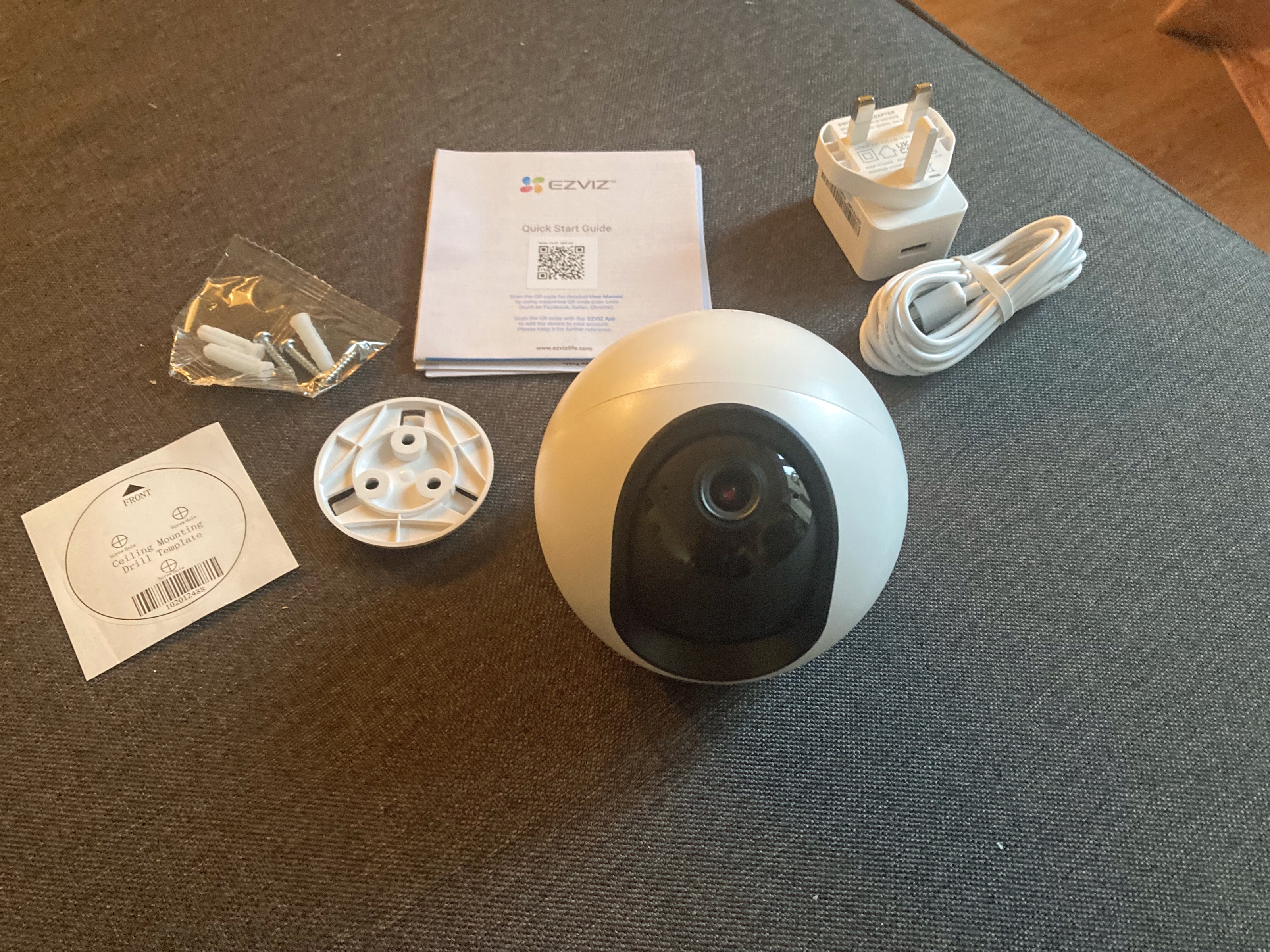
How we test home security cameras
To ensure the home security cameras we’ve reviewed can be fairly compared, we’ve tested and analysed several crucial features covering style, performance, and practicalities.
We rated each camera on the quality of the footage it records during the day and in the dark, how clear the two-way talk features are, and the settings to arm and disarm the camera. In addition, for each model, we wanted to know how easy the setup and installation were, as well as how efficient the cameras were at delivering motion notifications and whether AI features were designed to identify if the activity has been created by a person, animal, vehicle, or another source, were accurate.
Where relevant, we compared the battery life of each model, and for cameras with lights and/or sirens, we also compared the brightness and loudness to see if they were sufficient. We also assessed each model for its durability and design, looking to see if it comes with handy mounting plates and the ability to adjust the camera angle to suit your home.
Home security cameras FAQs
What is a home security camera?
All home security cameras offers a level of surveillance to your property whether you are at home, or away. Smart home security cameras specifically work with an app that displays live and recorded footage, along with some other fancy features that enable you to engage with the person (or animal) inside and outside of the house.
The price difference is generally down to the quality of these features; you'll pay more to receive 4K footage, than full HD footage for example. You'll also pay more for color night vision, facial recognition, and enhanced app features.
Can a home security camera save you money on insurance?
Possibly, though it depends on your insurer and the security system that you have fitted. According to price comparison site GoCompare, "Making your home more secure could help to reduce your home insurance premiums," though not all insurers will offer such deals, and they might only give discounts for certain approved security systems. Check with your insurer for details.
What type of home security camera do you need?
The two types of home security cameras are those for outdoor or indoor use. Indoor cameras tend to be cheaper than outdoor cameras because they aren't geared for outdoor weather conditions, and they won't have the longer battery-life that comes with battery-powered outdoor cameras.
Within those two types of security cameras are wired and battery-powered cameras. Wired security cameras would be best installed by a certified engineer, but you won't need to worry about recharging the batteries which can be a bit of a nuisance.
Do home security cameras need to be plugged in?
Not all models need to be plugged in when powering the best home security cameras. While there are plenty of mains-powered home security cameras on the market, suitable for indoors and outside, if you don't have access to a power socket where you want to install your home security camera, then fear not - there are many models that a rechargeable battery can power.
How long the battery lasts between charges will depend on how often the camera detects and records motion and how often the app is used to view the camera's live feed, but you can expect anywhere between one month and one year. Some home security cameras have swappable batteries, while others need to be removed completely to be recharged.
It's also worth noting that some home security cameras that offer a choice of power method may only provide certain features, such as activity zones, when used on mains power.
What's the difference between home security cameras and surveillance cameras?
Regarding securing your home, there are two options on the market; home security and surveillance cameras, also known as CCTV. So exactly how do they two differ?
Surveillance cameras have been around for decades, and see cameras are installed, usually on the property's exterior, although they can also be positioned inside. The cameras are connected to a central recorder by cables, and if you want to review the video, you'll need to connect the main recorder to a TV or monitor.
Surveillance cameras are generally more expensive than home security cameras. Usually, they require professional installation, but they ensure footage is captured without interference or the risk of a wireless connection failing or a camera battery running out. They also record everything and are only limited by the size of the central recorder, which is considerably larger than the capacity of a MicroSD card or the amount of secure online storage offered by home security cameras.
However, home security cameras are more affordable than CCTV and far easier to install. The footage is either stored on a MicroSD card inserted into the camera or base station - if the camera requires one - or in a secure area online, and you can review it from your smartphone or tablet, which means you don't need to find room for the central recorder and screen. However, most home security cameras don't record continuously, and if the internet connection drops, some cameras won't be able to record. Find out more about CCTV vs. smart home security cameras in our article.
Which security cameras work without a monthly fee?
Because many of the best home security cameras require a subscription fee to access all of the features, you should be careful not to purchase a device that doesn't do what you need it to without extra cost if you're not prepared to pay. Many cameras do, however, work brilliantly out of the box.
It's worth pointing out that almost all security cameras will work to a large extent without purchasing a subscription. Still, it's important to do your homework if there are particular features you want or need.
eufy - to get cloud storage for your cameras, eufy charges a small fee per camera for the basic service or a reduced rate per month for up to 10 cameras. You can save by paying for a whole year upfront. Find out more about eufy's subscription plans.
Arlo - similarly, Arlo charges for cloud storage, additional notifications, package detection, the 'call a friend' service, and theft replacement. Your camera also won't be able to tell the difference between a person, vehicle, or animal without forking out a little more per month. Find out more about Arlo's subscription plans.
Google - Nest Aware is Google's subscription plan, which gets you continuous video recording (rather than just the edited highlights), additional smart alerts, 30-60 day history, and support for everything from smart speakers to doorbells. Find out more about Google's subscription plans.
Swann - Swann's subscription offers 60 days of rolling storage on both the cloud and locally, TrueDetect (the ability to differentiate between packages, pets, and vehicles), lock screen alerts, an extended warranty, and a replacement policy in case of theft. Find out more about Swann's subscription plans.
Ring - Ring offers the longest video history in exchange for its subscription fee, giving you up to 180-days for all its doorbells and security cameras. You also get an extended warranty, cellular backup, person alerts, and assisted monitoring. Find out more about Ring's subscription plans.
For more on how to keep home security costs down, take a look at our guide to creating a security system on a budget.
Can wireless security cameras work without the internet?
Home security cameras are often called wireless security cameras. Does that mean they require an internet connection to work? In most cases, they do. Unlike CCTV, which requires cables to be laid around your home, wireless security cameras need internet access so they can send a notification to your smartphone when motion is detected, as well as let you view a live feed from the camera no matter where you are.
While some home security cameras record footage to a MicroSD card inserted into the camera, others store it in a secure area online - something they can't do if they don't have a Wi-Fi or wired internet connection. However, some models, including the Google Nest Cam (battery), will store footage locally for a short period if the internet connection drops, transferring the videos to the cloud storage space when the Wi-Fi is reinstated.
Do home security cameras invade privacy?
Home security cameras are designed to capture what's going on in and around your property. In some cases, the ideal mounting position means that as well as your property falling within the camera's field of view, you may also capture the road, pavement, a neighbor's driveway, front door, windows, or even their backyard, for example.
The same privacy rules regarding CCTV apply to home security cameras. So, you should be taking adequate steps to protect the privacy of those around you, such as your neighbors.
If you find sections of their property fall within the field of view of your home security camera, re-position the camera so this is no longer the case. If that's not possible, activate any features the camera offers to block out sensitive areas while monitoring your driveway or back garden.
We'd recommend telling your neighbors about your security cameras while showing them precisely what is and isn't being monitored and recorded by the camera. Also, consider placing the signs and stickers that often come with security cameras in your window to make passers-by aware that they might be monitored or recorded. Finally, find out more in-depth on this subject by reading do home security cameras invade your privacy?
- You've reached the end of the page. Jump back to the top ^
Get daily insight, inspiration and deals in your inbox
Sign up for breaking news, reviews, opinion, top tech deals, and more.

Cat is TechRadar's Homes Editor specializing in kitchen appliances and smart home technology. She's been a tech journalist for 15 years, having worked on print magazines including PC Plus and PC Format, and is a Speciality Coffee Association (SCA) certified barista. Whether you want to invest in some smart lights or pick up a new espresso machine, she's the right person to help.
- Josephine WatsonManaging Editor, Lifestyle
